17 May 2020, 21:09
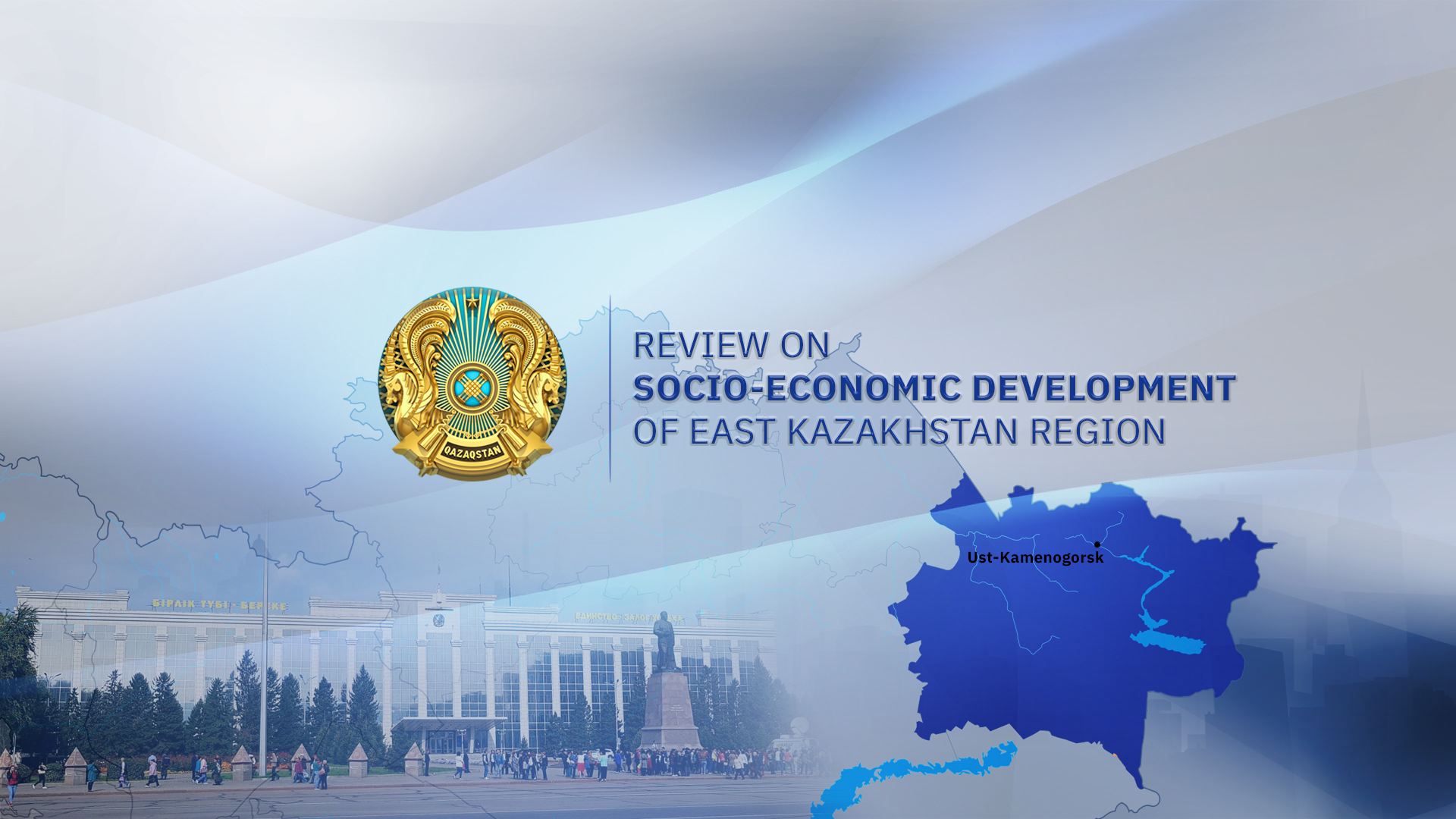
Being the industrial center of the republic, East Kazakhstan region is actively implementing projects to create a powerful and modern livestock breeding infrastructure, develop the tourism industry, and improve adjacent villages. Read more about the region’s achievements in these areas and the results of socio-economic development for four months of 2020 in the review.
East Kazakhstan — among leaders in industrial production of Kazakhstan
East Kazakhstan region is rightfully considered the main “pantry” of minerals, the only producer of zinc, titanium, magnesium, tantalum and other rare and rare-earth metals in the republic. It was here in February 1992 that the first gold of sovereign Kazakhstan was smelted.
Over the years of independence, large industrial facilities have been introduced in the region: the Malevsky, Artemievsky and Yubileyno-Snegirikhinsky mines, the Sekisovsky mining enterprise; Coal mine Karazhyra, gold mining enterprises LLP Dank, LLP Taskara, Aktogay mining and processing plant.
Today in the region there are 48 large industrial enterprises with over 53 thousand employees. For four months of 2020, the volume of industrial production reached 731.2 billion tenge, the growth rate was 115% compared to the corresponding period of 2019.
In the mining industry, industrial output amounted to 185.8 billion tenge, a growth rate of 131% compared to the corresponding period of 2019.

The main enterprises of the industry are Kazzinc LLP, Vostoktsvetmet LLP, KazmineralsAktogay LLP, and Bakyrchik mining enterprise LLP. Over 50 deposits of precious metals are concentrated in the bowels of the region.
70% of the region's industrial production is in manufacturing. Based on the results of four months of 2020, manufacturing enterprises produced industrial products for 500 billion tenge, an increase of 111% compared to the corresponding period in 2019.
Chemical industry products are manufactured by enterprises of UMZ JSC, Orika Kazakhstan JSC, KAZFOAM LLP, Magelan LLP. The volume of production for three months of 2020 amounted to 6.4 billion tenge.
The enterprises of the woodworking industry in January-March 2020 produced goods worth 1.3 billion tenge, the growth in production in current prices amounted to 4.3 times. The main enterprises of the industry: LLP Melissa (Ust-Kamenogorsk), LLP Favorite (village Zubovka), JSC Zhana Semey Shpal Zauyty (Semey).
The bulk of the production capacity of light industry in the region is concentrated in Semey — Semspetssnab LLP, UK Unis LLP, Semipalatinsk shoe factory LLP, Roza-VVK LLP, BayazitLife LLP, Korund PRK LLP Comfort Technology, PKF Rauan LLP and Isnar LLP operate in Ust-Kamenogorsk.
In January-March 2020, light industry enterprises produced industrial products by 1.1 billion tenge, which is 30% higher than in 2019. Since March 2020, enterprises of the region's light industry have been involved in sewing reusable masks. The main contractor was Semspetssnab LLP.
East Kazakhstan Region — the flagship of domestic engineering industry
One of the dynamically developing sectors of the regional economy is the machine-building complex of the region. 20% of all engineering products of the republic are produced in East Kazakhstan. The production of Asia-Auto JSC (cars), Sem-Az LLP (agricultural machinery), Daewoo Bus Kazakhstan LLP (buses) competes in the global market.
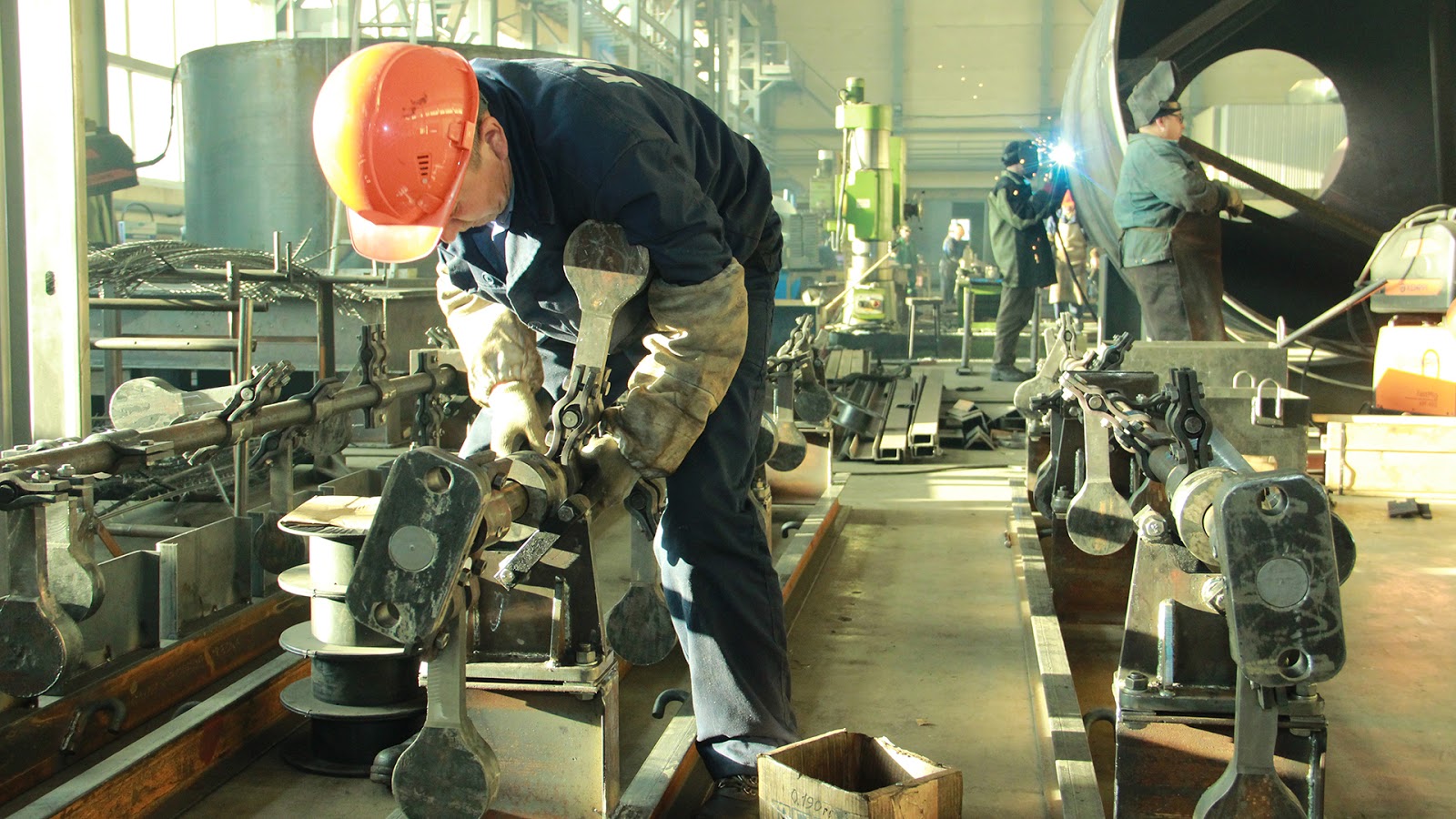
In the machine-building industry, the volume of production for three months of 2020 amounted to 73 billion tenge. The machine-building complex produces mining equipment, equipment for processing plants and metallurgical plants, oil and gas production, industrial capacitors, tractors, cable and wire products, motor vehicles, etc.
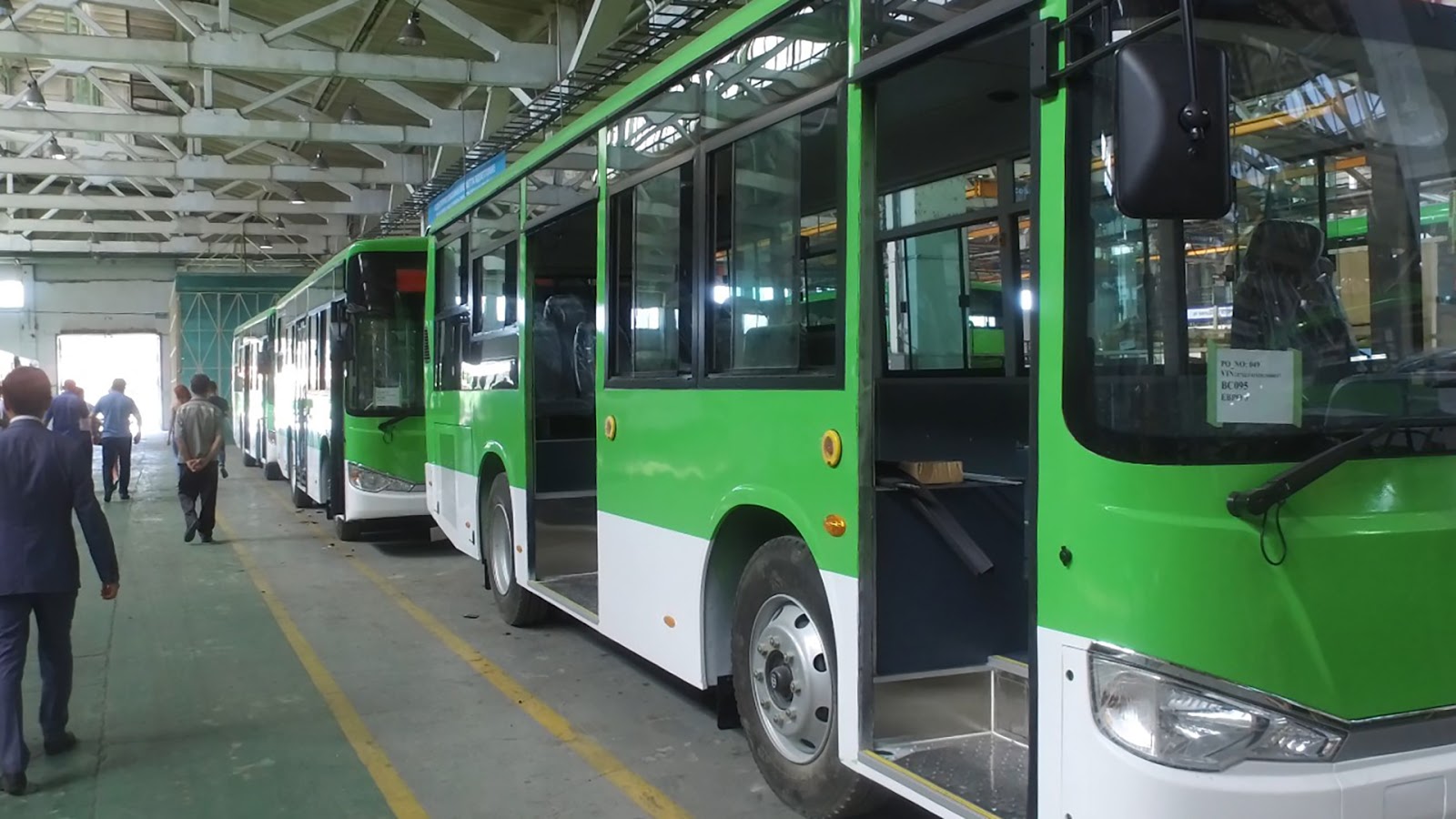
Industrial sector of East Kazakhstan region changed significantly over the years of independence
As part of the first five-year plan (2010-2014) of industrialization in the region, 30 projects have been created for 202.3 billion tenge with the creation of 5.3 thousand jobs.
Within the framework of the second five-year plan (2015-2019) of the East Kazakhstan Entrepreneurship Support Card, 20 projects were put into operation for 529.1 billion tenge with the creation of 3.3 thousand jobs.
In 2020, it is planned to implement five projects totaling 16 billion tenge with the creation of 610 jobs. A major project is Construction of a mining and processing complex of the Karchigin deposit of LLP GRK MLD worth 5 billion tenge.
From 2021 to 2025, it is planned to implement 19 projects with a total investment of 555 billion tenge and the creation of 8.4 thousand new jobs.
East Kazakhstan region exports its products to 90 countries
About 30 large export-oriented industries operate in the region. Products are supplied to more than 90 countries. The main consumers of goods are China, Russia, Turkey, Uzbekistan. Export of the East Kazakhstan region in January-February 2020 amounted to $245.5 million.
In 2019, 11 enterprises of exporters of the East Kazakhstan region received a reimbursement of costs totaling 253.5 million tenge, including four enterprises received reimbursement for transportation costs of 208.1 million tenge.
East Kazakhstan region has great energy potential
There are nine power plants in the region with a total installed capacity of 2,323 MW, which makes up 10.6% of all energy capacities in Kazakhstan. Three hydroelectric power plants on the Irtysh River have the status of national importance and ensure reliable and stable operation of the entire energy complex of the Republic of Kazakhstan.
One of the important state directions is the implementation of the Concept on the Transition of the Republic of Kazakhstan to the Green Economy.
At the end of 2019, the share of electric energy generated by renewable energy sources amounted to 1.9% or 183.19 million kW / h per year of the total generation of 9,641.37 million kW / h per year.
In August 2019, a solar power plant with an installed capacity of 30 MW in the Zharma district was successfully commissioned. This year, it is planned to commission the Turgusun HPP-1 in the Altay region.
As a result of the auction in 2018, one land plot was chosen for the construction of a 100 MW wind farm in Aktogay, Ayagoz district. The station will generate up to 300 million kWh of electric energy. Commissioning of the facility is planned for 2021.
Based on the results of the auction in 2019, six projects were identified with a total capacity of 29.7 MW in the Zharma district of the East Kazakhstan region. Currently, the project preparations are underway.
Agro-industrial complex of East Kazakhstan region is attractive for investors
Eastern Kazakhstan is distinguished by its rich nature, creating perfect conditions for various agricultural projects. A powerful fodder base creates virtually unlimited opportunities for the development of animal husbandry. According to its specialization, the region’s agriculture has mainly a livestock sector with developed crop production. Livestock production accounts for 62% of the gross output of the region.
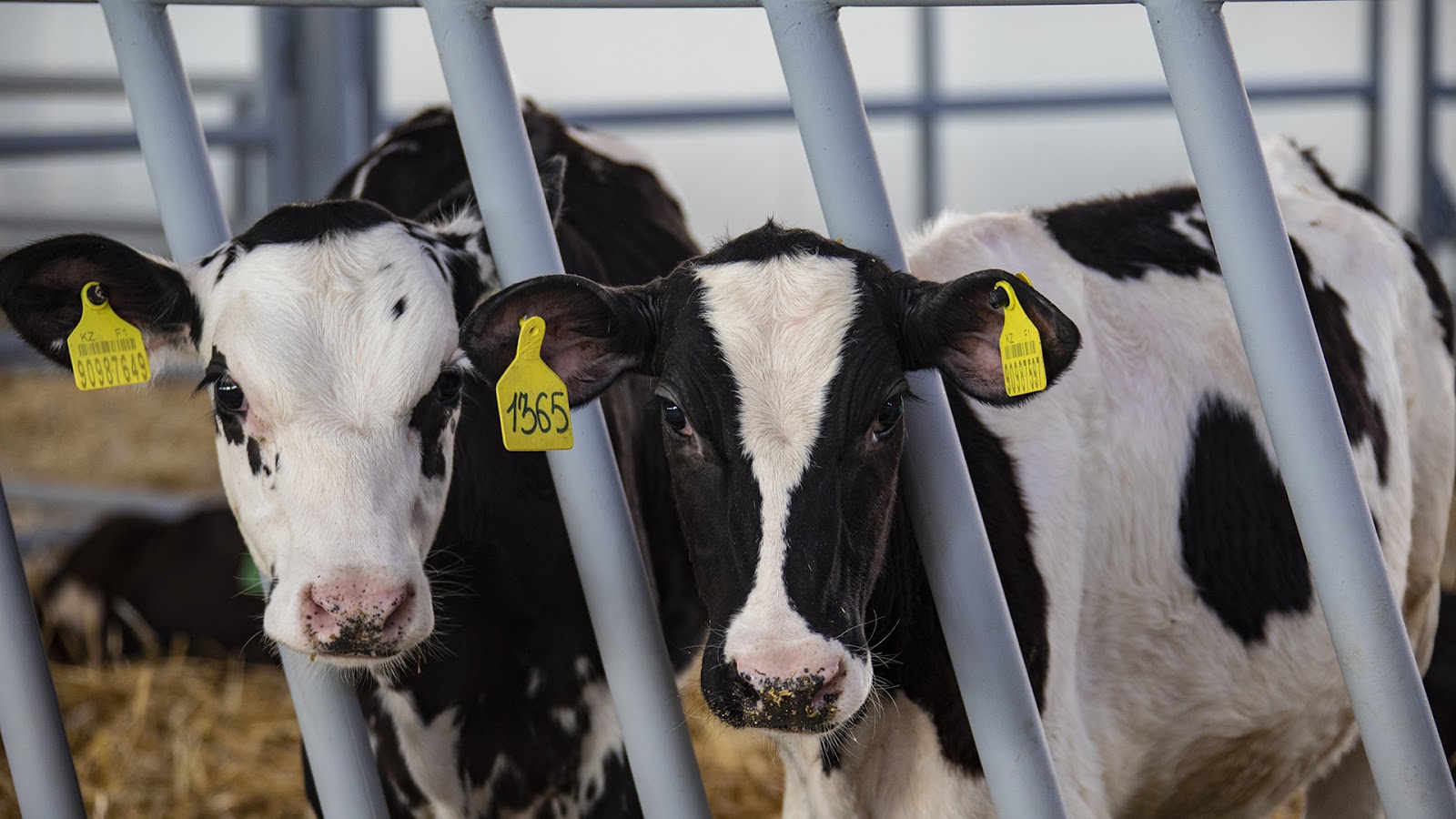
The region takes 1st place in the country for the production of milk, honey, antlers and oilseeds of sunflower, 2nd place — for the production of meat. Investments in the framework of the development of dairy farming allowed to load the capacities of processing enterprises from 29 to 75%. In addition, two projects on the construction of meat processing enterprises are being implemented.
Several projects are underway in the region to create a powerful and modern livestock infrastructure.
In January-April 2020, the gross agricultural output amounted to 82.9 billion tenge, or 111% of the level of 2019.
In 2019, investments in fixed assets of agriculture amounted to 30.86 billion tenge. In January-April 2020, investments in fixed assets of agriculture amounted to 4.6 billion tenge.
Food production in 2019 in the region amounted to 132.3 billion tenge. In January-March 2020, food products worth 33.2 billion tenge were produced.
In 2019, according to the State Revenue Committee and the Statistics Committee of the Republic of Kazakhstan, agricultural products for $343.3 million were exported, where processed products were worth $77.8 million, or 22.7% of the total export of agricultural products of East Kazakhstan region.
The agricultural products of the region were exported to more than 20 countries: the Russian Federation, China, the Islamic Republic of Iran, Tajikistan, Kyrgyzstan, Latvia, Lithuania, Turkmenistan, Germany, Turkey, Italy and other countries.
The main types of non-oil exports were wheat flour, buckwheat, vegetable oils, poultry, fish and fish products, sausages and canned food, butter, cheese.
In January-February 2020, according to the State Inspection Committee and the Veterinary Control and Oversight Committee of the Republic of Kazakhstan, 11.6 thousand tons of processed agricultural products were exported, of which:
Today, regional agricultural producers receive such measures of state support as subsidies and soft loans.
In 2019, 30.7 billion tenge of subsidies were allocated to support the development of agriculture in the region. In 2020, 26.98 billion tenge of subsidies were allocated for this, including 5.5 billion tenge to support crop production, 9.9 billion tenge for livestock, 4.98 billion tenge for investment subsidy, and 6.5 billion tenge — for other areas.
Under the lending programs, as of May 12, 2020, loans to the agricultural producers of the region of 4,104.2 million tenge were granted through the branches of Agrarian Credit Corporation JSC and JSC Fund for Financial Support of Agriculture.
In 2020, it is planned to create about 39 thousand jobs in East Kazakhstan region
Today all conditions are being created in the region to combat unemployment.
To ensure employment and to prevent the growth of unemployment, to obtain stable incomes by the population, an Employment Roadmap is being implemented.
The program provides for the implementation of more than 800 infrastructure projects worth over 77 billion tenge with the creation of about 20 thousand jobs, including: 18,870 temporary and 1,150 permanent jobs.
For each project, a step-by-step algorithm of actions and a monitoring mechanism were developed at each stage of implementation, including competitive procedures, the progress of construction and installation works, monthly development of budget funds, commissioning of facilities, and job creation.
Tender procedures for public procurement have been completed and contracts have been concluded with contractors for 811 projects where relevant work has begun. As of May 14, 2020, 8,301 new temporary jobs were created on infrastructure projects, including 4,237 temporary jobs in the areas of employment centers.
As of May 1, 2020, 7,068 people were employed through employment agencies, including 3,324 for permanent work.
In 2020, the region plans to create about 39 thousand jobs, including 12 thousand permanent jobs. As of May 1, 2020, only 7,740 jobs were created in various sectors of the regional economy, of which 3,769 were permanent jobs.
The number of registered unemployed in employment agencies as of May 1, 2020, amounted to 6,652 people, who during the year will be involved in active measures of employment and implementation of infrastructure projects under the Employment Roadmap.
The Education Department of the East Kazakhstan region is conducting systematic work on training personnel with technical and vocational education in the framework of the Enbek Program for Productive Employment and Mass Entrepreneurship for 2017-2021 from among non-working, self-employed youth in specialties that are in demand on the labor market.
For the implementation of free and professional education, 1,730 places are allocated annually from the republican budget in the framework of the Enbek Program for the Development of Productive Employment and Mass Entrepreneurship for 2017-2021.
Technical and vocational education is provided to the participants of the Program free of charge in accordance with the list of specialties for vocational training.
In the 2019-2020 academic year, 1,730 places were allocated for 42 colleges in 42 demanded specialties. Currently, 1,601 people are studying for the new recruitment.
As of May 1, 2020, 3,858 people are studying under the Program. In just two years, 687 people completed training, of which 565 people were employed.
Under the Nurly Zher program, it is planned to implement 74 projects
In 2020, due to all sources of financing in the region, it is planned to build 118 apartment buildings with a total area of 535.8 thousand m², 6,433 apartments:
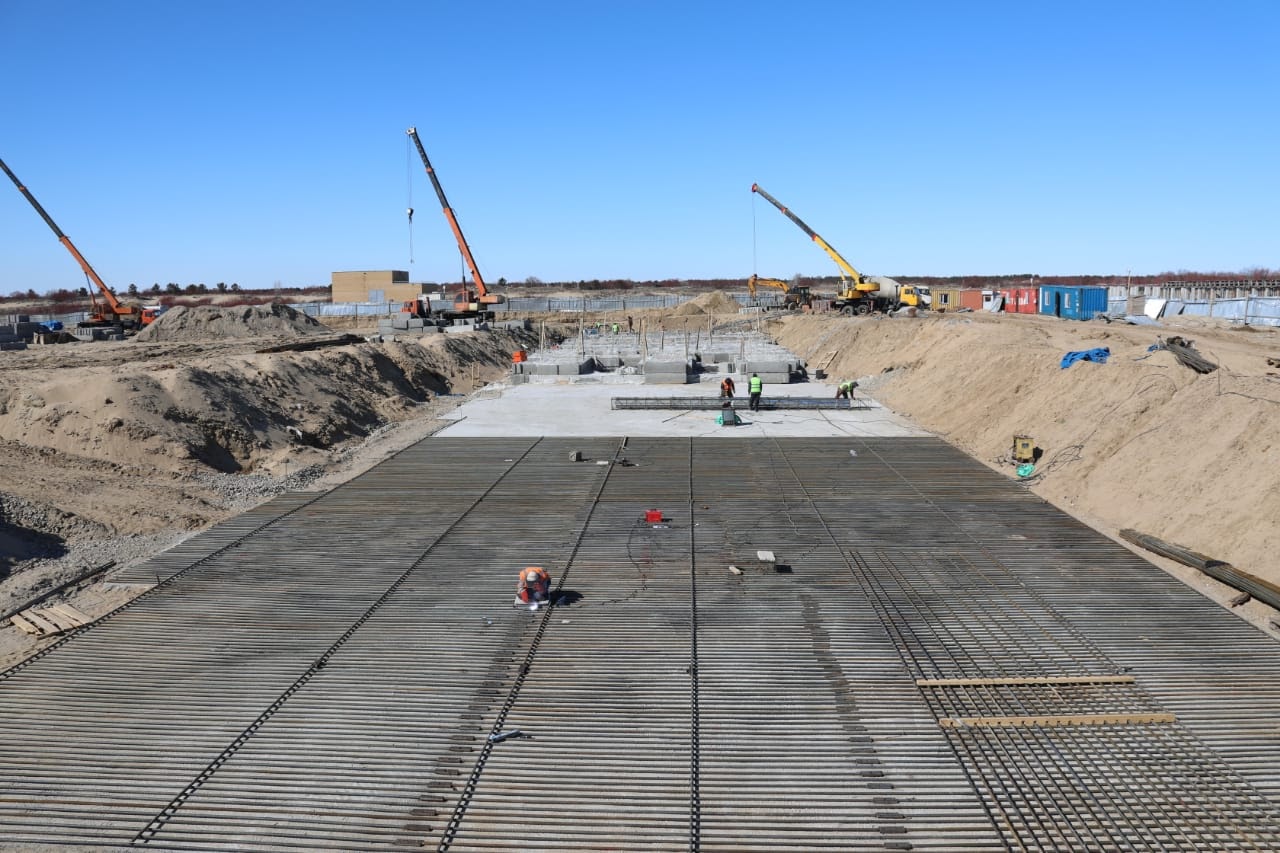
The annual target for housing commissioning from all sources of financing is 519.3 thousand m².
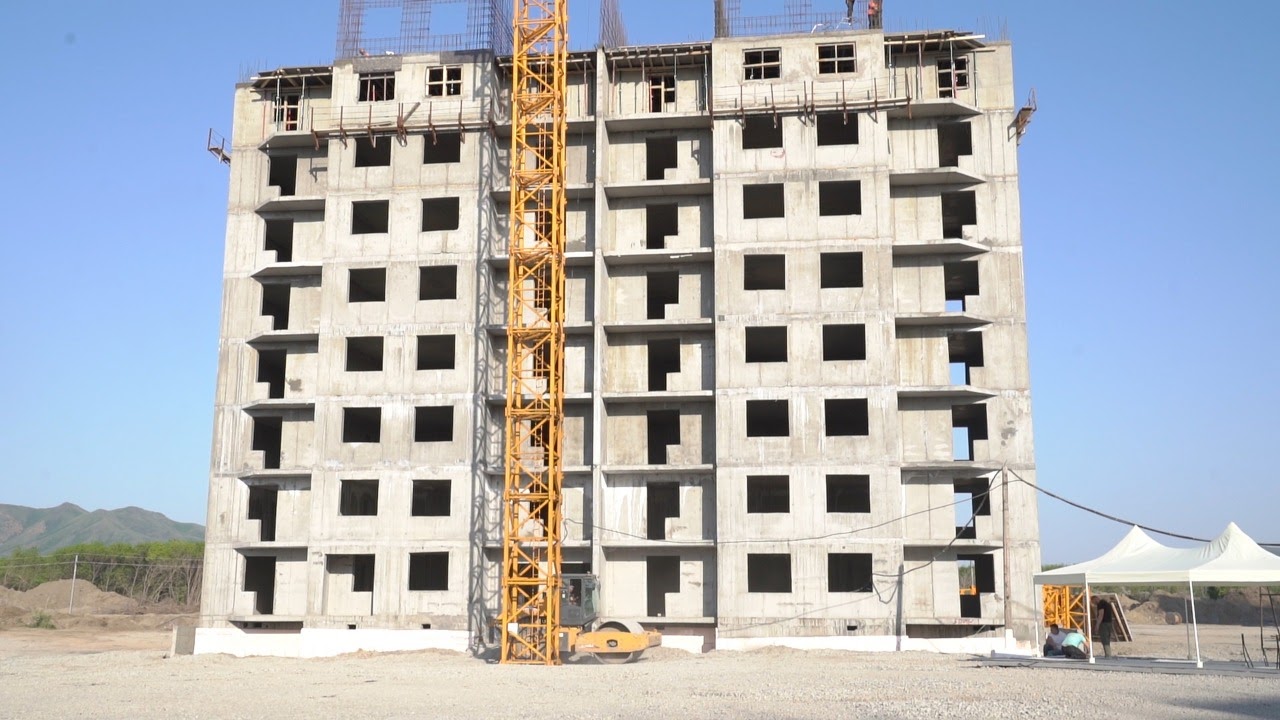
In addition, today there are available in the region, are under development and are planning to develop design estimates for the construction of 255 houses with a total area of 929.6 thousand m², 11,382 apartments.
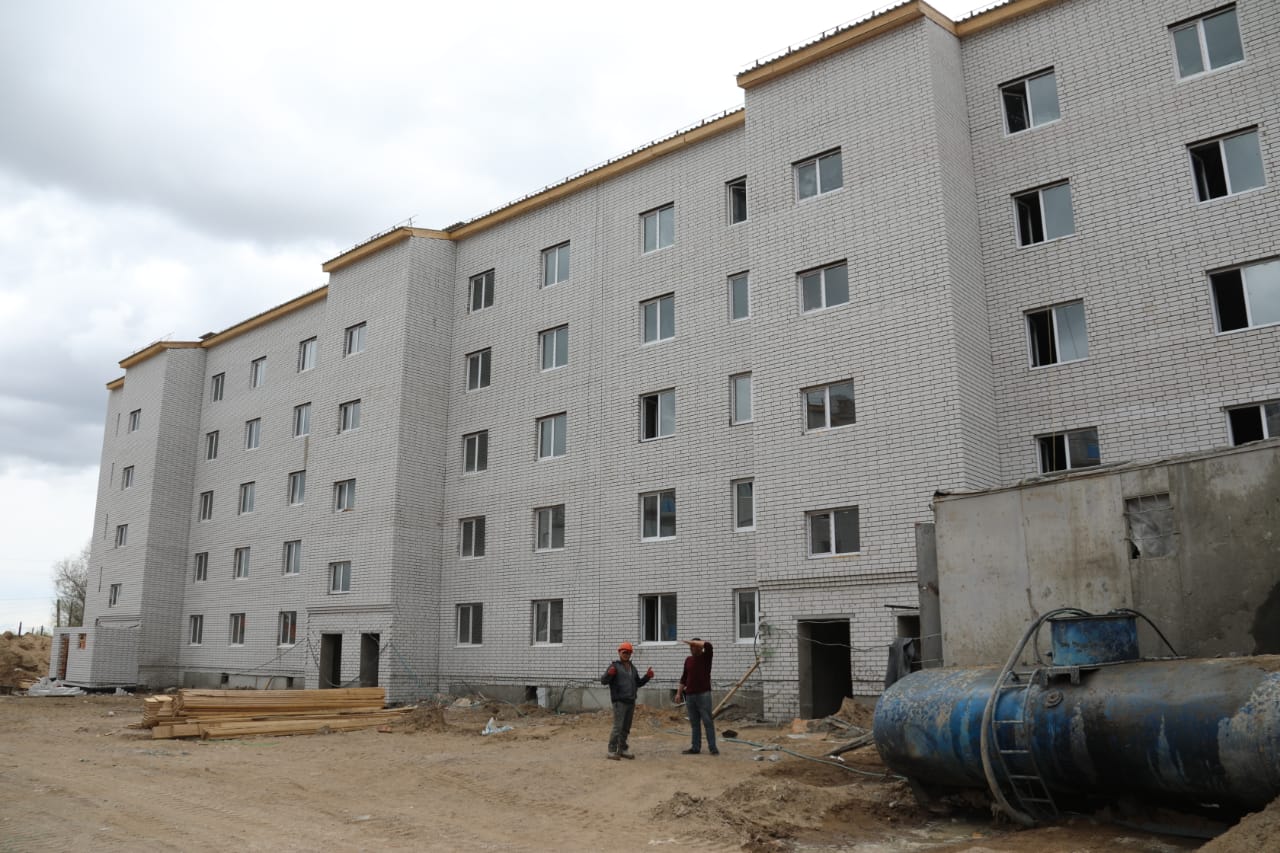
Within the framework of the Mortgage Lending Program 7-20-25, as of May 6, 2020, in the region, second-tier banks accepted 1,338 applications for mortgage loans of 11.8 billion tenge, of which 837 applications were approved for 7.4 billion tenge.
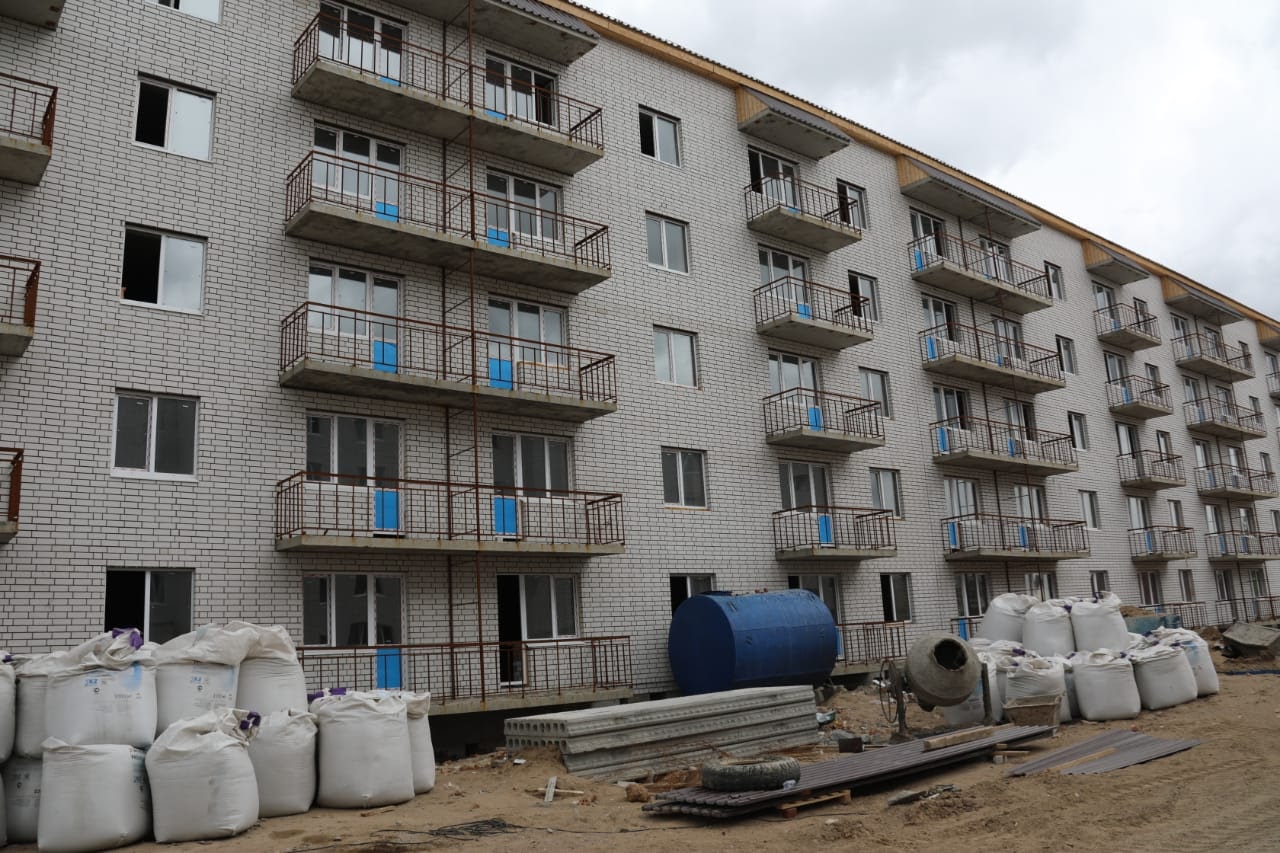
In addition, 2.3 billion tenge for 228 housing loans are provided from the republican budget for the implementation of the Baqytty Otbasy program at 2% under the Nurly Zher State Program from the republican budget.
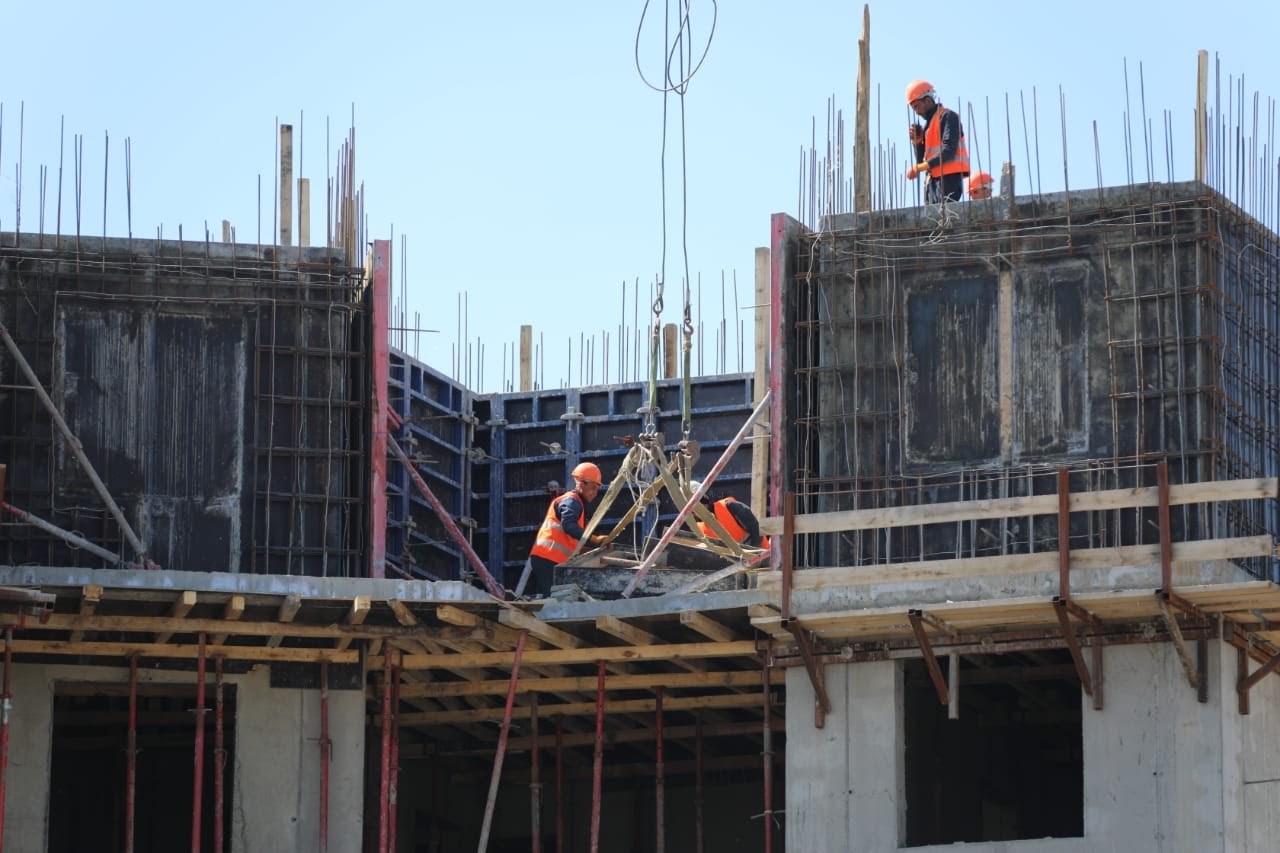
As part of the state program for bringing engineering and communication infrastructure to housing areas, 8.8 billion tenge is provided for the implementation of 21 projects. According to the results of the 1st quarter of 2020, 1.1 billion tenge was transferred, 984.8 million tenge, or 87.5%, was disbursed. It is planned to create 690 jobs.
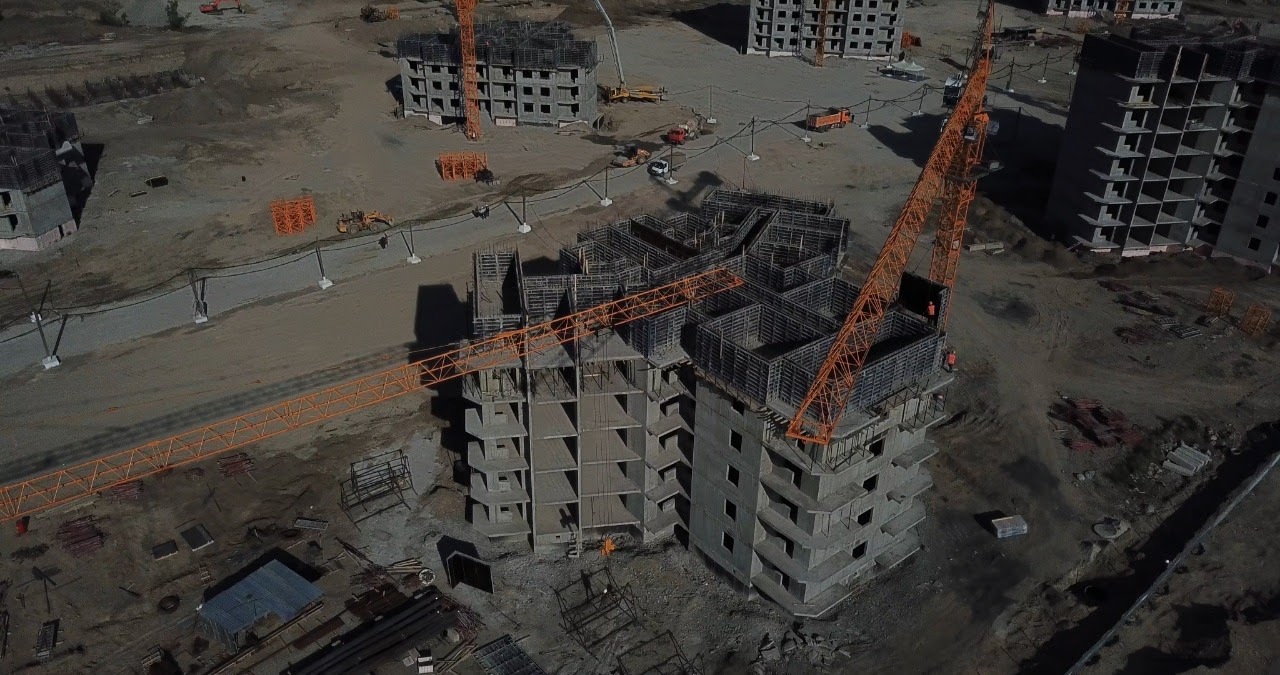
397 km of roads in East Kazakhstan region to be repaired in 2020
The condition of the transport and road infrastructure of the region is one of the main conditions for improving the quality of life and creating a comfortable environment for citizens.
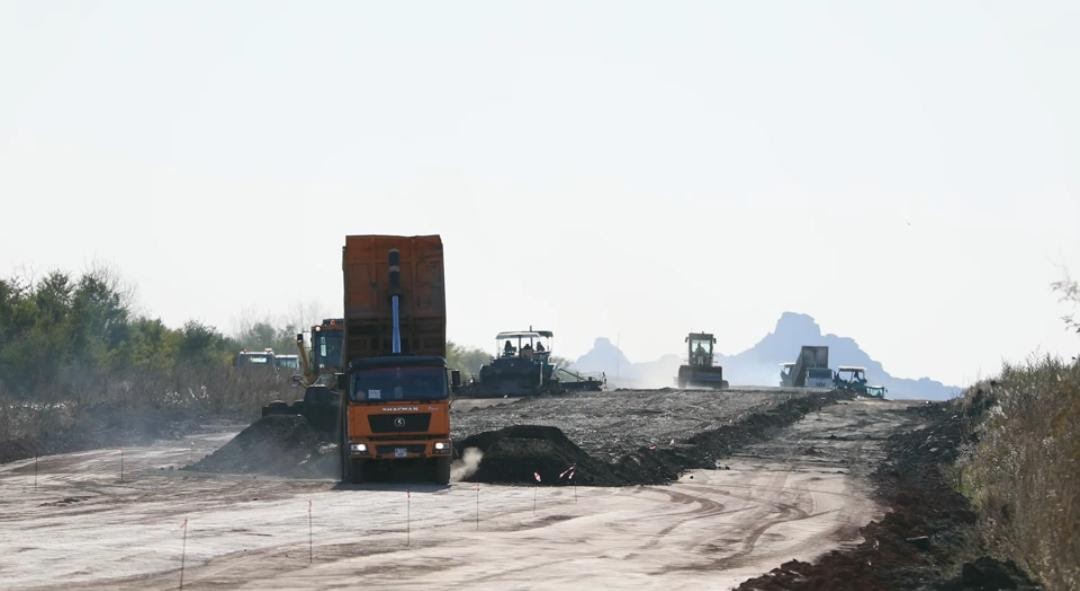
Since the beginning of the implementation of the Nurly Zhol State Program, reconstruction of roads of republican significance has been actively carried out, including the reconstruction of the Omsk-Maykapchagay road of the Center-East corridor, 407 km long, the completion of the Taskasken-Bakhty road (20 km) is ongoing in 2020, and implementation of borrowed funds from the Kalbatau - Maykapchagai (415 km) and Almaty - Ust-Kamenogorsk (454 km) roads with a total length of 889 km is underway.
No new roads were commissioned; only reconstruction of existing roads is underway.
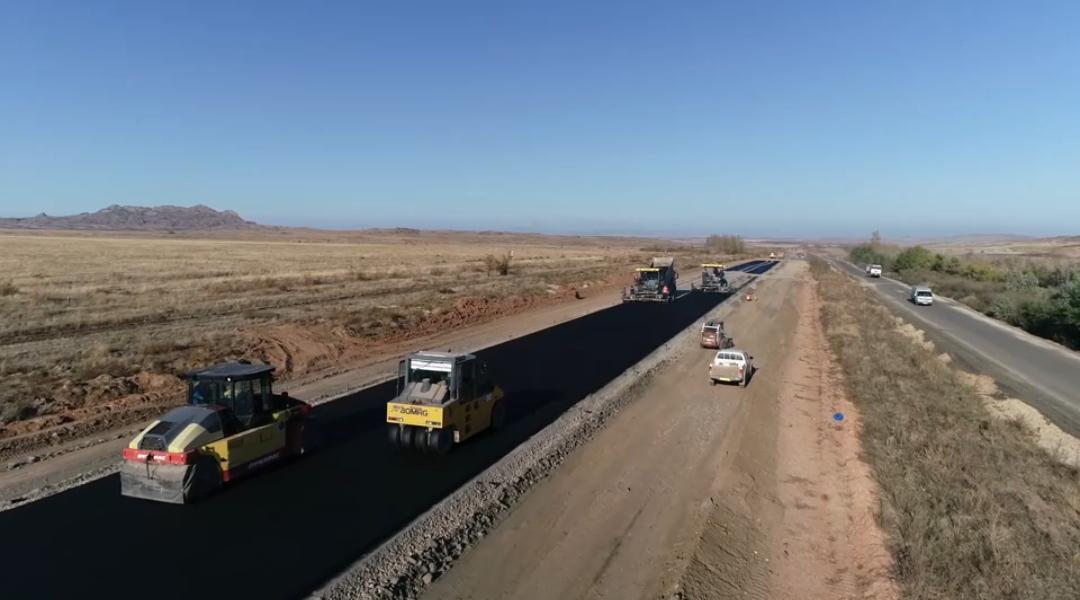
The share of roads of regional and district significance that are in good and satisfactory condition is 81%, according to the results of the year it is planned to increase to 85%.
This year, 102.8 billion tenge will be invested in this area, of which 82.3 billion tenge — on the roads of republican significance Taldykorgan - Kalbatau - Ust-Kamenogorsk, Kalbatau - Maykapchagai, 20.5 billion tenge — on the roads of regional and district significance and streets of settlements. Throughout the region, average repairs will cover 397 km of roads and 83 km of streets. Also, road works will be carried out along the Semey - Kainar, Ust-Kamenogorsk - Altai - Rakhmanovskie Klyuch, Ayagoz - Tarbagatai - Bugaz routes.
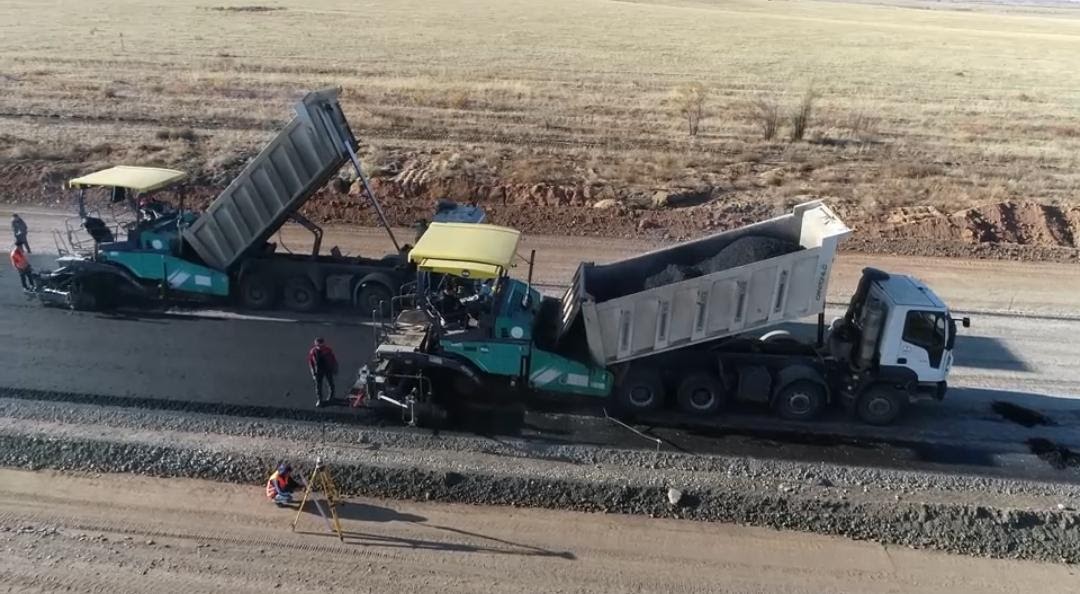
At the moment, reconstruction of the airport of Ust-Kamenogorsk for 10.3 billion tenge and the airport of the village of Urdzhar — for 4.7 billion tenge has begun. In addition, this year the issue of building a bridge across the Bukhtarma reservoir in the Kurchum district will be resolved.
East Kazakhstan region leads in tourism development
According to official statistics for 2019, the number of tourists amounted to 612,689 people, this is the 4th place in the republic.
Compared to 2018, the number of tourists increased by 8.4%. The number of inbound tourism visitors (non-residents) increased by 3.1% compared to the previous year and amounted to 29,741 people.
The number of visitors to domestic tourism (residents) increased by 8.7% compared to last year and amounted to 582,948 people.
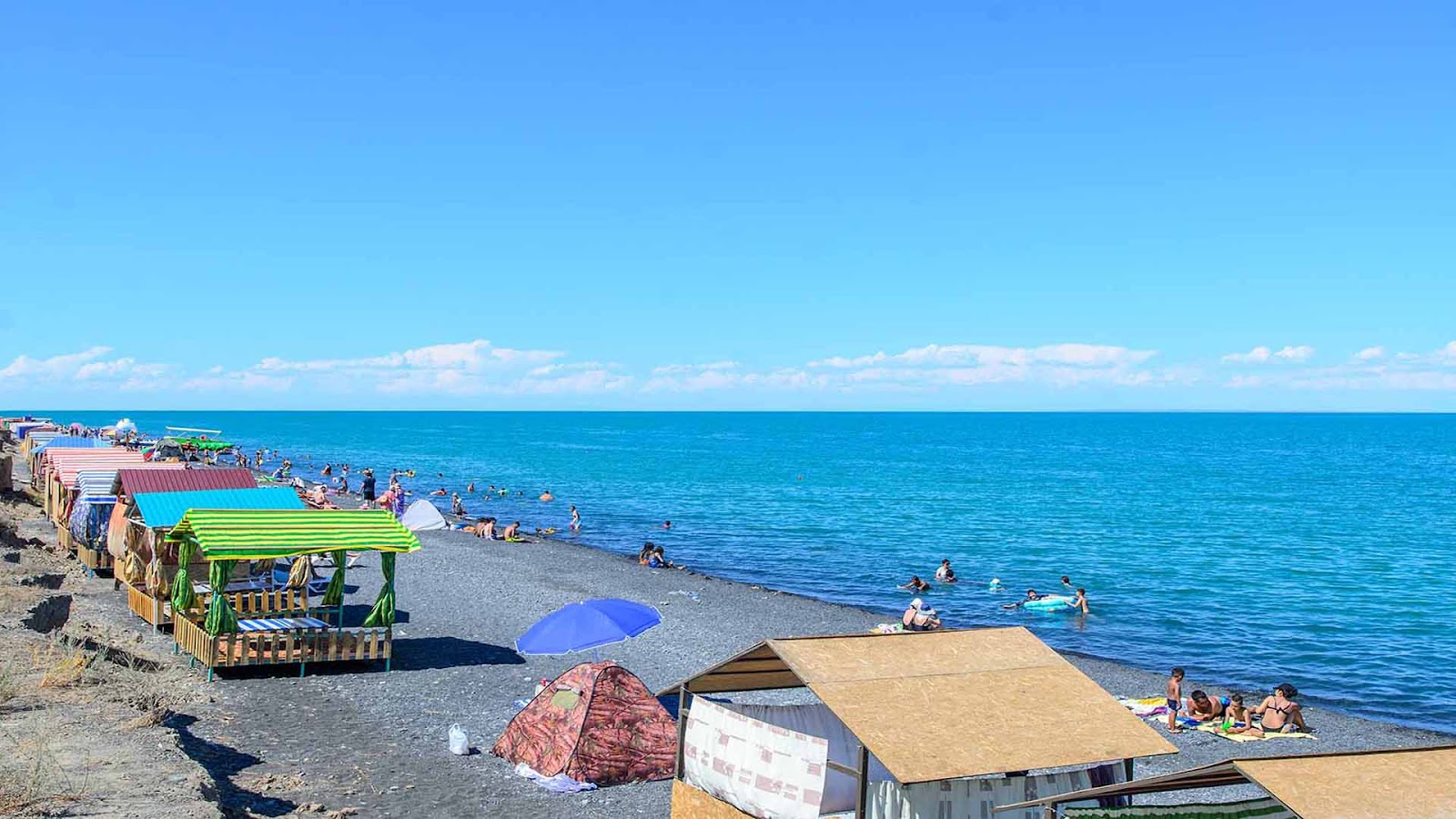
Over the past three years, the dynamics of visitors has increased significantly, so in the period from 2016 to 2019, the tourist flow increased by 33%.
Today in the region there are 576 places of accommodation, there are 10,743 rooms in them.
It should be noted that the East Kazakhstan region is the leader in the country in terms of the number of places of accommodation and their one-time capacity, which is 33,629 beds, which is 5.7% more compared to 2018.
In 2020, the construction of 25 tourist facilities for a total of 2,933 million tenge has begun in the region as a whole; these are locations: hotels and holiday homes.
In addition, the construction of a stage and an open-air dance floor has begun on the shores of Lake Alakol. The project, the cost of which is 200 million tenge, was funded as part of the regional program Akniet.
The complex provides for the construction of a site for 3,000 seats, a summer terrace and a playground.
Also, the construction of a large tourist complex Keruen Plaza, designed for 220 beds, with a restaurant, an outdoor cafe and a swimming pool, has begun. The project cost is 1.5 billion tenge, the implementation period is 2022.
The implementation of the above projects will create about 130 new jobs on the lake.
Landscaping to Alakol to be completed by 2021
During his working trip to the East Kazakhstan region in April 2019, President Kassym-Jomart Tokayev criticized the state of tourism infrastructure and instructed the Government, together with the akimat, to work out and take comprehensive measures to improve the infrastructure of the resort area.
“In modern conditions, the tourism industry is an important driver of economic growth and a source of creating new jobs. Within the framework of the draft State Program for Tourism Development, the coast of Lake Alakol, which can attract more than 2 million tourists annually, has been included in 10 major tourist centers. Last year, many Kazakhstanis chose to rest on Alakol, but at the same time faced with a lack of the proper level of service. People complained about the deplorable state of local roads. In this regard, the task of the akims of the East Kazakhstan and Almaty regions is to resolve the issue of repairing roads and increasing the level of related services as soon as possible,” the president said.
Responding to request for ongoing work on implementation of the Head of State’s instructions, the akimat of the East Kazakhstan region informed that in 2017, the reconstruction of the main road leading to the coast of the lake Alakol — the road of republican significance Taskesken – Bakhty, has started. In 2020, it is planned to commission 20 km of the road. The remaining sections were reconstructed earlier.
Further, travel is carried out along the regional roads of Makansha - Zhalanashkol and Barlyk Arasan – Lake Alakol.
Over the period from 2011-2016, over 133 km of the Makanshy-Zhalanashkol highway was repaired for a total of 2,690.242 million tenge.
The coverage of the Makanshy-Zhalanashkol highway is asphalt concrete in satisfactory condition.
The road Barlyk Arasan – Lake Alakol was largely overhauled on the km 15.7 – 23 in the period from 2014 to 2016.
The highway of regional significance Makanshy - Zhalanashkol leads to the railway station Zhalanashkol.
Environmental measures: Emissions over six years decreased by 10 thousand tons
The historical heritage and dynamic development of industry in the region determines a steady number of technogenic pollutants, the main concentration of which falls on the city of Ust-Kamenogorsk.
At the same time, as noted in the akimat, in the region, the total volume of pollutant emissions over the past six years has decreased by 10 thousand tons.
Over the past four years, statistical indicators of air emissions are about 130 thousand tons.
Emissions from Ust-Kamenogorsk decreased by seven thousand tons.
The main share of pollution falls on two enterprises — Kazzinc LLP and Ust-Kamenogorsk TPP.
At the same time, Kazzinc LLP reduced emissions by 41.7 thousand tons (70%) over 15 years. Thermal power facilities are also working to address the issue of reducing emissions.
Over the past five years, large enterprises have invested 27.2 billion tenge in environmental protection measures.
At the Ridder Metallurgical Complex of Kazzinc LLP, the construction of the HydroPolyMet atmospheric leach plant is planned, the completion date is 2022, the expected effect is a 7% reduction in sulfur dioxide emissions.
Bukhtarma Cement Company LLP in 2020 plans to reconstruct two dust-collecting installations of rotary kiln refrigerators with the installation of bag filters in the amount of 500 million tenge, the expected effect of reducing dust emissions is 456 tons.
On Nov. 8, 2019, Kazzinc concluded a memorandum with the Ministry of Ecology, Geology and Natural Resources on mutual cooperation in the implementation of advanced technologies (until 2025) to reduce the load on the environment by 20%.
In the next three years, four enterprises of the first category (Ust-Kamenogorsk Metallurgical Complex, Ulba Metallurgical Plant, Ust-Kamenogorsk Titanium-Magnesium Plant, Ust-Kamenogorsk TPP) plan to introduce an automated emission monitoring system with data transmission to the authorized body.
It should be noted that Ust-Kamenogorsk is located in the basin of the Altay Mountains, which predetermines special meteorological conditions for the formation of calm or low wind speed, which contribute to the accumulation of harmful emissions in the surface layer of the atmosphere with the subsequent formation of photochemical smog under the influence of solar radiation.
In this regard, the environmental service pays special attention to the implementation of enterprise action plans to reduce harmful emissions during periods of adverse weather conditions.
An environmental monitoring system has been organized (in addition to Kazhydromet posts), conditions have been created for the population to have unhindered online access to environmental information.
Uninterrupted online monitoring allows you to quickly respond to facts of excess concentration of harmful substances.
In order to gradually achieve environmental quality standards, taking into account the main directions of the Concept of Transition of the Republic of Kazakhstan to the Green Economy, the regional akimat has developed environmental quality targets for East Kazakhstan region for 2020-2024, providing for the introduction of modern ash collecting devices with the replacement of second-generation emulsifiers for thermal power plants, translation transport of Ust-Kamenogorsk city to gas fuel, optimization of the city’s transport scheme, phased (2020-2030) transfer of residential areas of the city’s private sector to gas from prisoners, the introduction of technologies of enrichment of coal deposits Karazhyra in order to further reduce the ash and sulfur content.
Comprehensive Environmental Health Action Plan of the East Kazakhstan Region for 2020-2024 was also developed, providing for financing from enterprises' budget and own funds for 29 billion tenge.
The implementation of the Comprehensive Plan will significantly reduce the level of air pollution in the cities of Ust-Kamenogorsk and Ridder and achieve the targets for environmental quality.
The Department of Ecology has now tightened control over compliance with the NMU regimes by enterprises of Ust-Kamenogorsk.
Much attention is paid to the improvement and reconstruction of the road network, the construction of bridges and passages. In Ust-Kamenogorsk, work was done to expand the roads. Thus, natural channels of air circulation are created.
Systematically created green belts of settlements. The regional program Zhas Orken was adopted and successfully implemented, 170.3 thousand trees were planted (Ust-Kamenogorsk, 15.5 thousand seedlings). The planting of trees will continue next year.
All schools in region have modern equipment
Over the years of independence, 167 educational facilities have been built in the region, including 143 schools with 37,845 places, 24 kindergartens with 5,390 places.
In the regional emergency schools and schools with three-shift training have been eliminated. Work is continuing to reduce school shortages. This year, by the beginning of the new school year, the construction of a new school with 300 seats in the village of Karaul in the Abay district will be completed.
To reduce the deficit of places in the region in 2021-2025 it is planned to build 6 schools with 5,200 places.
In accordance with the instruction given in the Address of the Head of State dated March 5, 2018, in 2018-2019, five new student dormitories for 1,263 places were opened in the region, including:
To improve the living conditions of students in 2020-2022, seven dormitories for 2,848 places will be built for state universities and colleges, including two for universities with 1,540 places and five for colleges with 1,308 places.
Of these, one dormitory for a college in Semey with 288 beds will be introduced before the end of this year.
On the initiative of the akim of the region, in 2018-2019, within the framework of the Presidential Program Rouhani Zhangyru with the support of the Paryz Foundation, the Menin Mektebim project was implemented in the region aimed at equipping regional schools with the standards of Nazarbayev Intellectual Schools.
For two years, all 648 schools of the region were equipped, including:
Several measures are being taken in the educational system of the region aimed at improving the educational process through the use of digital technologies, which include the modernization of the information and communication infrastructure, the introduction of Wi-Fi, digital educational content, the automation of public services, and the training of IT specialists.
In order to solve the problems of priority in preschool organizations and automate the process of formation and functioning of the queue and issue directions in all 340 organizations of preschool education, a system has been introduced for automatically distributing the priority and issuing directions to kindergartens. In 2019, more than 25 thousand directions were issued using this platform.
The public service “Acceptance of documents and admission to the organization of education, regardless of departmental subordination for training in general education programs of primary, basic secondary, general secondary education,” was automated. In 2019, from June 1 to Aug. 30, with the help of this system, 21,372 first-graders were taken to school.
All 648 institutions of secondary education are connected to the Unified Information System Kundelik.kz, which is 100% of the total number of schools. The system has activated 25,422 teachers, 191,422 students and 151,987 parents.
In the region, all 648 schools have the Internet connection at a speed of 4 Mbit / s and higher. For this purpose, 650.3 million tenge were allocated from the local budget of cities and regions.
All 100% of comprehensive schools and state kindergartens are provided with video surveillance systems. In addition, in 2019, in Ust-Kamenogorsk, video cameras in educational institutions were transferred to the Interagency single situational center.
100% of educational organizations are computerized in the region. The implemented program Menin Mektebim allowed to improve the indicator of schools in terms of providing computers and interactive panels. The total number of computer equipment amounted to 33,131. The number of students per computer decreased to six.
Equipping schools, opening IT classes, and improving the qualifications of teachers made it possible to increase the level of competence of children in IT areas.
Regional IT forums, festivals, hackathons are held annually, in which students, college and university students demonstrate their projects in the scientific, technological and IT field.
In February of this year, regional (city) stages of championships and IT festivals on IT competencies were held: basic programming and programming of devices on Arduino microcontrollers, 3D modeling and robotics.
In the framework of the regional digital forum Digital East-2019, 15 IT projects of schoolchildren aimed at automating various fields of activity were awarded grants by the regional akim for further implementation.
For the development of Start Up projects, the Jastar Time Innovation Center has been opened, in which schoolchildren are trained in IT areas: 2D / 3D graphics, programming, video production, the basics of business and entrepreneurship. The center serves as a career guidance and business platform for the exchange of experience and ideas in the IT field. The training course is developed and conducted by leading scientists Serikbayev East Kazakhstan State University. The program is not duplicated from the school and is aimed at solving practical problems. For enrollment, students provide a portfolio and are tested in mathematics, logic and English. At the end of the course, children demonstrate developed IT projects to experts, who in turn give recommendations for improving the project and its further application.
To date, all schools are connected to the Bilimland educational Internet resource, which contains about 10,000 interactive lessons, virtual laboratories, video films and audio files that have passed the examination of the Ministry of Education and Science of the Republic of Kazakhstan and covering the program of updated educational content.
In order to create conditions that ensure the transition of educational institutions of the technical and vocational education system to the information society, the E-College project is being implemented in the education system. This project allowed to reduce the volume of paper workflow, and also increased the efficiency of management of technical and vocational education organizations. An automated system is implemented in all (100%) state colleges.
Work on the digitalization of the education system will continue.
95% of healthcare facilities have access to the Internet
In the East Kazakhstan region, the quality of medical services is constantly improving, this is achieved by increasing the level of knowledge of medical personnel. For this, a three-level training program for medical workers has been introduced. To date, 5,511 specialists have improved their qualifications, 3.4 billion tenge have been allocated for this, including:
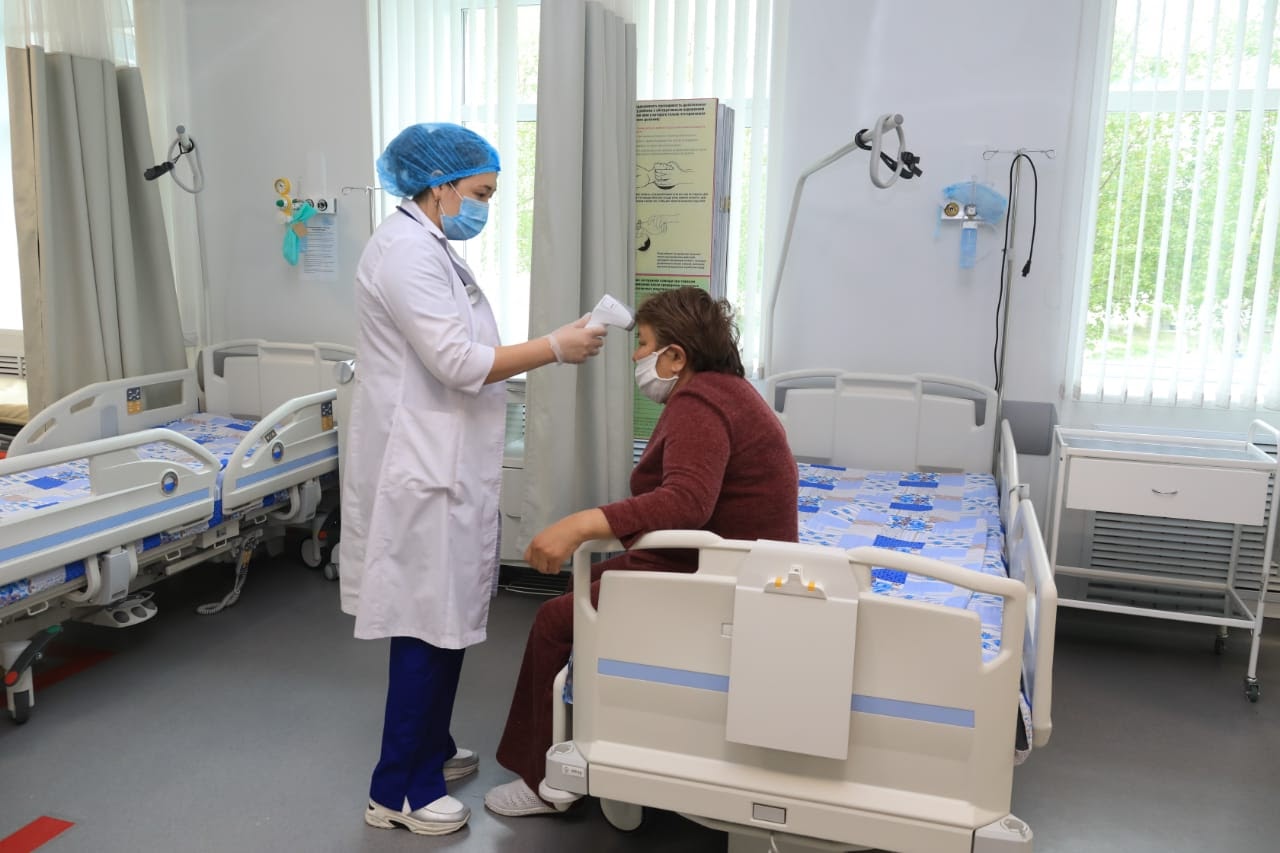
In 2020, it is planned to train 46 specialists in clinics in Israel and Turkey, as well as conduct master classes with the participation of Kazakhstan and international specialists for a total of 567.8 thousand tenge.
In the East Kazakhstan region, there are 117 independent public and private organizations providing a guaranteed amount of free medical care. They include 543 departments.
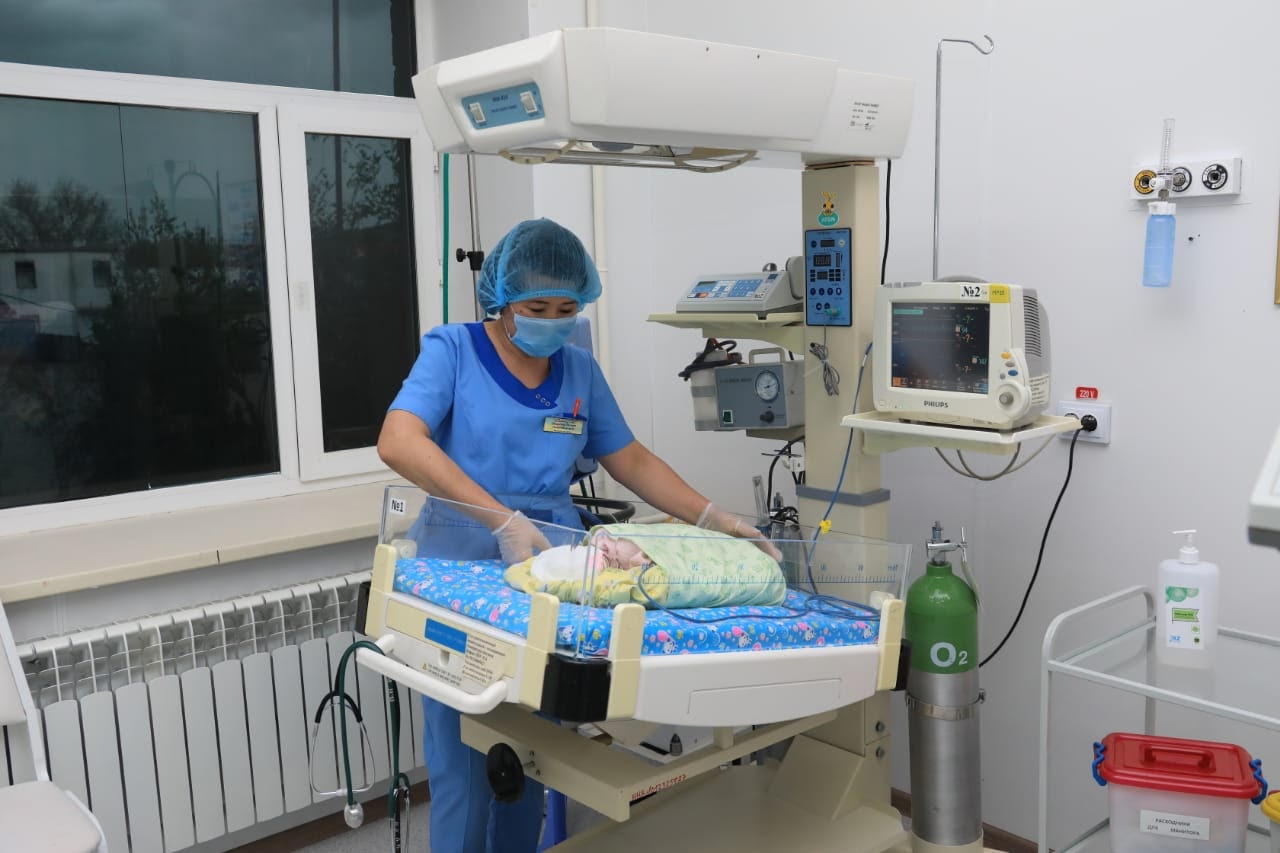
The 117 head medical organizations are 100% connected to the Internet through various access points (satellite, cellular, fiber-optic transmission line).
543 departments that are part of the head medical organizations of East Kazakhstan region are connected to the Internet, as follows:
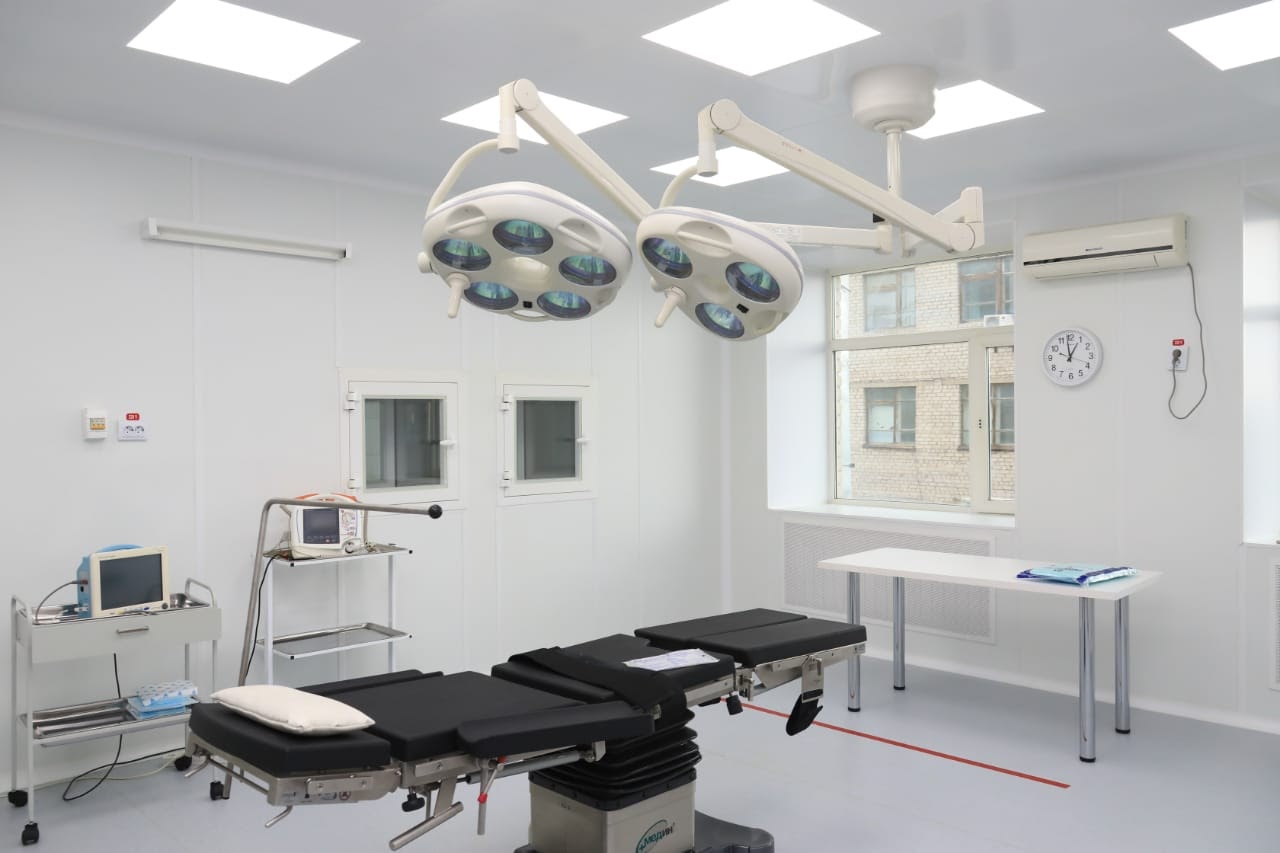
Thus, 625 medical facilities have access to the Internet, which is 95% of all healthcare facilities.
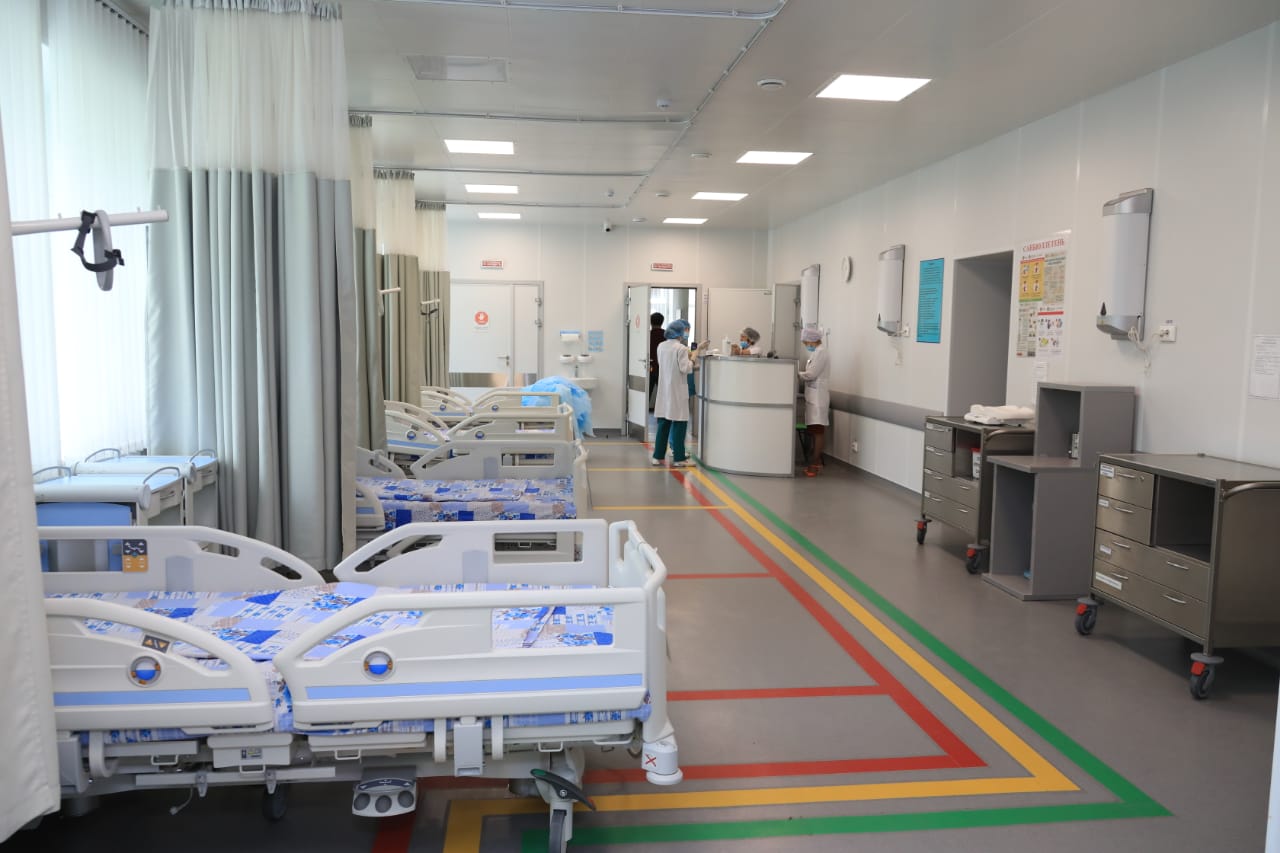
Medical organizations below the district level, which include VA, FAP and MP, are 94% connected to the Internet.
The average speed of access to the Internet is 1,024 Kbps. In remote settlements, the speed can be reduced to 250 Kbps.
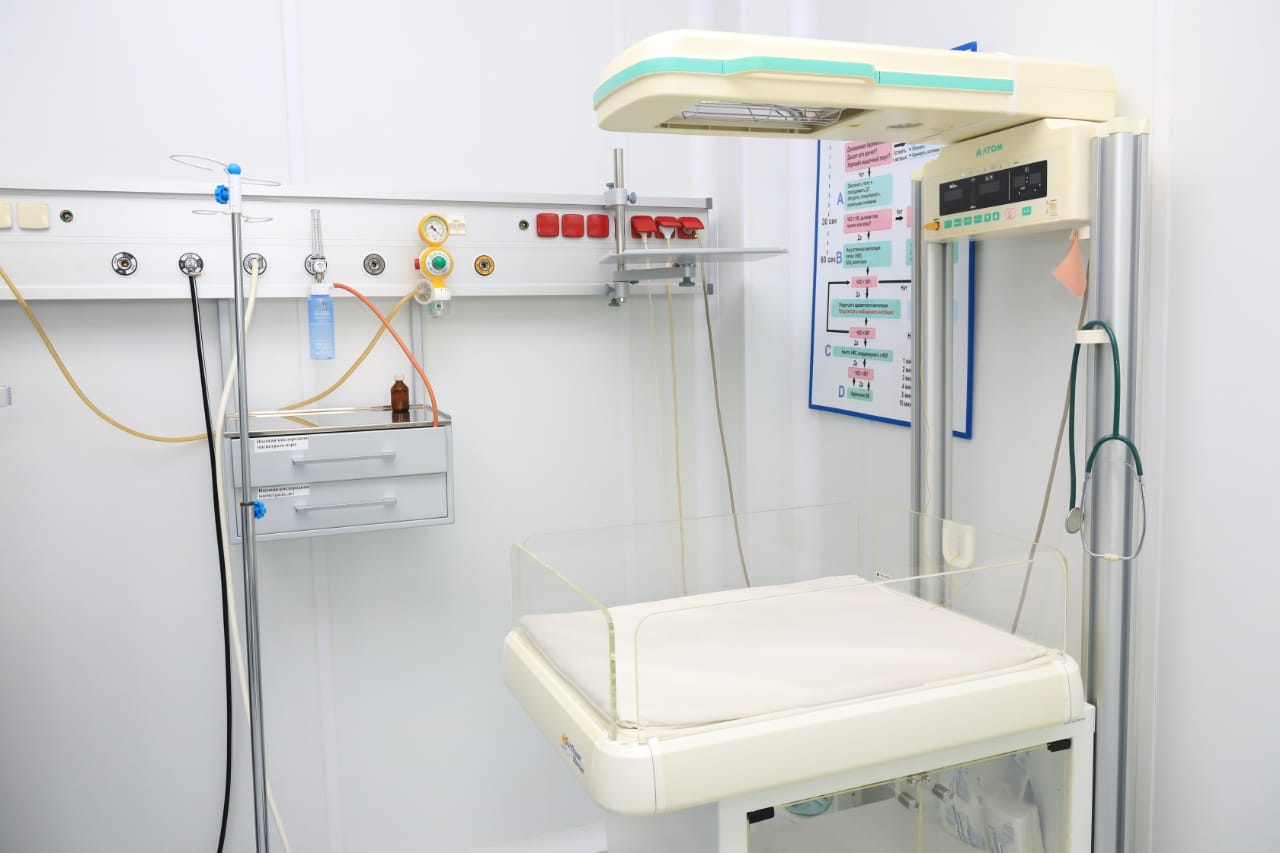
For unhindered work in maintaining medical records in electronic format in East Kazakhstan region, 8,222 workplaces are 100% equipped with computers.
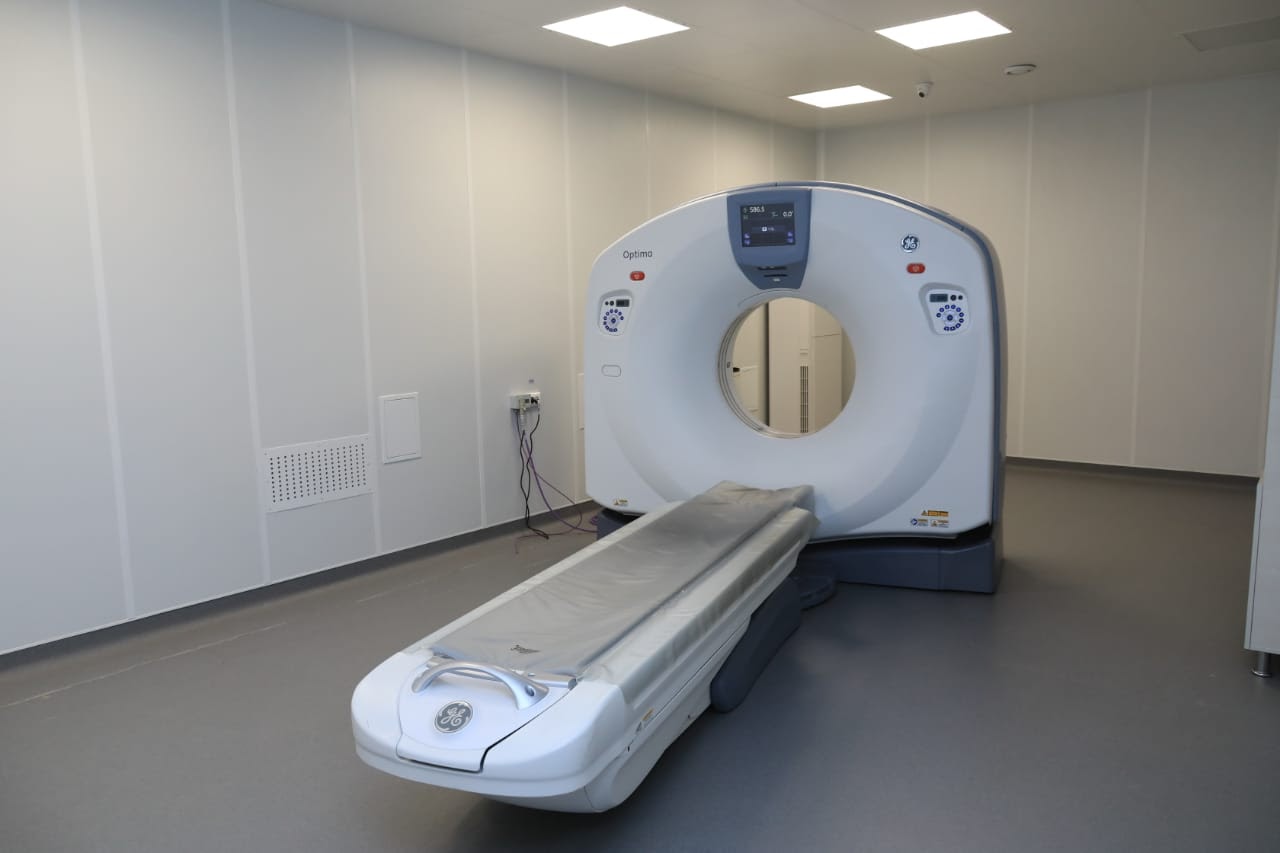
The coverage of medical organizations with medical information systems is 100%. 12,116 medical workers out of 12,419 were trained in the IIA, which amounted to 98%.
Integrations were made with the Unified Payment System, the information system of the Ministry of Health, and the information system Saqtandyrý 100%.
Today, the population of the East Kazakhstan region is 100% covered by regional electronic health passports. Medical organizations have digital literacy posts. Work is underway to send push notifications about the need for screening.
A special mobile application is installed for patients on D-registration, thanks to which a preliminary appointment is made for medical examination, electronic free prescriptions are written, etc.
The mobile app’s online coverage percentage is 75%.
In the East Kazakhstan region, taking into account the urgency of the problem of the spread of chronic non-communicable diseases, based on international experience, in 2013, a disease management program for people with newly diagnosed chronic non-communicable diseases was introduced as part of a pilot project. The high prevalence of risk factors has created a high prevalence of chronic noncommunicable diseases. Chronic noncommunicable diseases that are part of the HSS include arterial hypertension, diabetes mellitus and chronic heart failure. It is these diseases that lead the structure of morbidity and mortality in Kazakhstan.
Work on increasing the coverage and attracting patients with SCI is carried out at the level of primary medical and social care. The projected coverage of patients with SCL at the end of 2020 is 60%.
In Ust-Kamenogorsk, on the basis of the CGP at the East Kazakhstan Regional Hospital, the Senimdi Dariger project operates on the Remsmed platform, which allows remote medical consultations to be provided to patients.
Telemedicine has been introduced at all levels of medical care, which allows doctors in remote areas to receive advice from regional experts, from experts from national research institutes without leaving the district. It is possible to conduct joint consultations of doctors in case of controversial or severe cases.
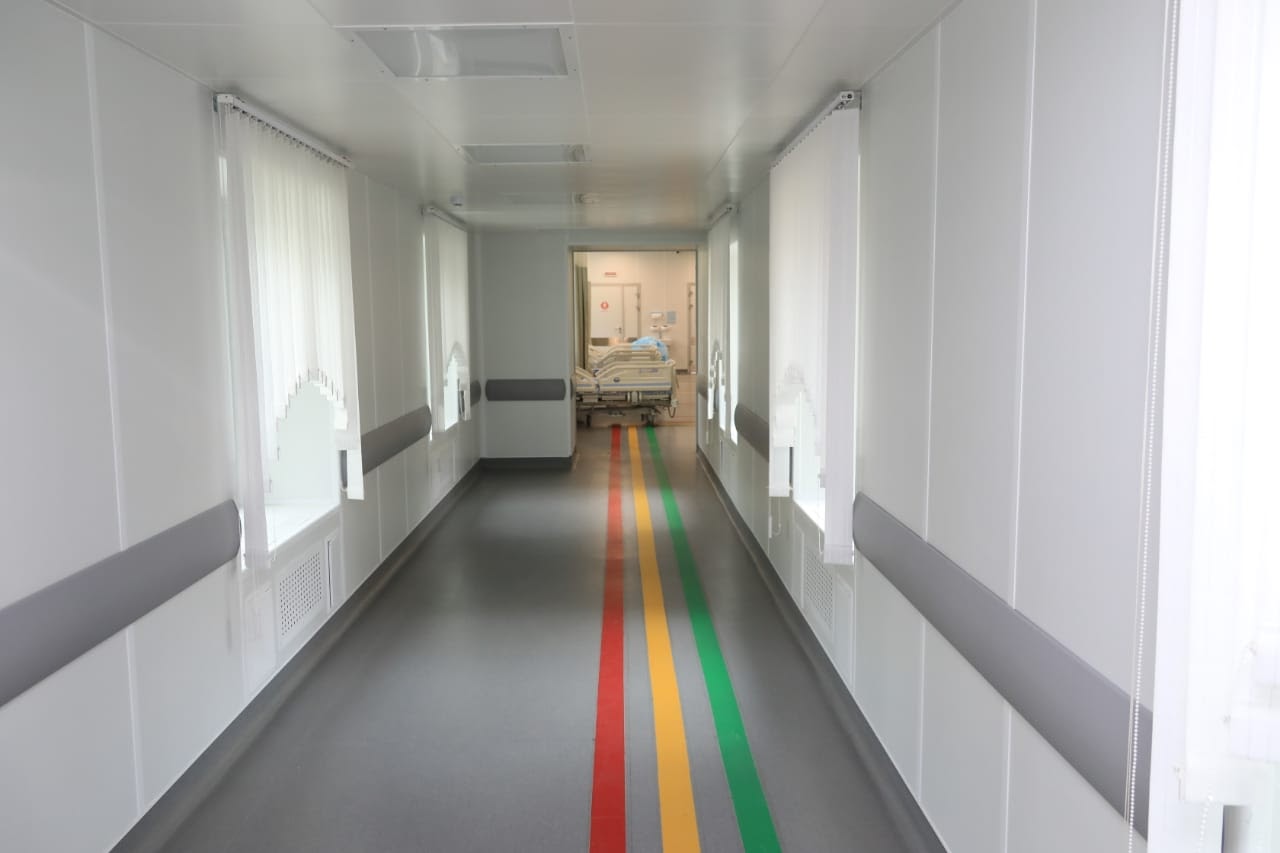
This year, the region’s medical organizations are equipped with angiographic systems (Interdistrict Hospital Altai and Ayagoz), a linear accelerator (Multidisciplinary Center for Oncology and Surgery), mechanical ventilation devices (all hospitals), and mobile digital x-ray machines.
In addition, as part of the Comprehensive Plan for the Development of the Border Regions of the East Kazakhstan Region for 2020-2024, maternity wards of regional hospitals are being equipped with modern equipment.
Support for entrepreneurship is a priority
The development of small and medium-sized businesses is one of the priority areas of the state economic policy. To this end, in the East Kazakhstan region financial and non-financial support for entrepreneurship is actively implemented, which inevitably leads to the achievement of high values of key indicators.
To date, the number of registered small and medium-sized enterprises has amounted to 100,977, of which 86,752 are operating SMEs.
At the end of 2019, the number of people employed in the SME sector amounted to 232,543 people, the growth rate by 2018 — 100.3%. The volume of products manufactured by SMEs increased in nominal terms by 211.3 billion tenge or 20.4% compared to 2018 and amounted to 1,248.6 billion tenge. The index of output by SMEs amounted to 114.3%.
For the I quarter of this year, small and medium-sized businesses of the region paid taxes in the total amount of 75.6 billion tenge, which is 130.3% compared to the same period last year.
Support for domestic producers is carried out both within the framework of the existing State Programs, as well as new Programs aimed at the development of Kazakhstani business.
In particular, within the framework of the State Business Support and Development Program Business Roadmap-2025, small and medium-sized businesses can receive financial support in the form of: subsidizing the interest rate on a loan, guaranteeing against a lack of collateral, issuing state grants and summing up the missing production infrastructure business facilities and non-financial support in the form of information and analytical support, training in the basics of entrepreneurship, advanced training AI experts.
Currently, during the anti-crisis measures, amendments have been made to the Business Roadmap-2025 Program regarding the lending mechanism, according to the proposed wording, subsidies are carried out on standardized terms without additional financial burden of 6% for the final borrower, and the difference is paid by the state.
The upper threshold of the loan was increased to 7 billion tenge per borrower and industry restrictions were lifted (except for trade), the mechanism for issuing guarantees for loans was simplified - for start-up entrepreneurs up to 85% with a loan amount up to 360 million tenge, for existing entrepreneurs up to 50% with a loan amount up to 1 billion tenge.
In 2020, more than 6 billion tenge is provided for the implementation of Business Roadmap-2025. In the framework of the State Business Support and Development Program Business Roadmap-2025, in order to financially support entrepreneurship, since 2010 1219 projects have been sponsored for a total loan of 175 billion tenge, the amount of subsidies paid amounted to 15.5 billion tenge. For 4 months of 2020, subsidy agreements were signed for 38 projects for a total loan amount of 1.8 billion tenge, the subsidies paid.
505 projects were guaranteed for a total loan amount of 17.6 billion tenge, the amount of guarantees provided amounted to 7.2 billion tenge. For 4 months of 2020, 22 projects were guaranteed in the amount of loans of 882.4 million tenge, the amount of guarantees amounted to 369.5 million tenge.
Grants were provided for 222 projects for 585.5 million tenge.
As part of non-financial support for training in doing business and consulting support for potential and start-up entrepreneurs, the Business-Advisor and Business-Growth components were trained by 14.7 thousand students, 422 people under the project School of Young Entrepreneurs.
Within the framework of the project Service support for running an existing business, 50.9 thousand services were rendered to 21.2 thousand customers.
Since the start of the program, 134.5 thousand consultations have been provided to 79.8 thousand clients at the Entrepreneurs Service Centers and Entrepreneurs Support Centers.
In total, within the framework of the Business Roadmap-2025 Program, regional entrepreneurs paid taxes of 41.3 billion tenge, secured output of 1,043.3 billion tenge, and created 4.5 thousand jobs.
At the regional level, in order to implement priority projects of entrepreneurs, together with Damu Entrepreneurship Development Fund JSC, at the end of 2016, the Program for Preferential Financing of SME Projects, Ak-Niet, was launched. Currently, as part of anti-crisis measures, changes have been made to the lending mechanism for business entities, namely, industry restrictions (including retail trade) have been abolished, the maximum loan amount is 50 million tenge, the loan term is up to 7 years for investments and 3 years for working capital .
Since the beginning of the Program (2016), 4.5 billion tenge has been allocated for these purposes, including 2.25 billion tenge from the regional budget and 2.25 billion tenge from the resources of the Damu Fund. As of May 1, 2020, 120 projects were funded, taking into account repayable funds, in the amount of 4.9 billion tenge, including in 2019, taking into account repayable funds 48 projects for 1.2 billion tenge.
As another measure of business support, the Resolution of the Board of the National Bank of the Republic of Kazakhstan approved the Program for preferential lending to SMEs affected by the state of emergency at a rate of 8% per annum, for a period of not more than 12 months, for working capital replenishment, without industry restrictions up to 3 billion tenge for SMEs and not more than 50 million tenge for individual entrepreneurs.
To implement this program, the National Bank allocated 600 billion tenge, which are placed in 12 second-tier banks. The operator determined Kazakhstan Sustainability Fund. Credit funds can be used to pay for goods, work, services, taxes and other payments to the budget, wages by non-cash method.
As of May 12, 2020, 47 applications from SMEs for replenishment of working capital in the amount of 15.9 billion tenge were received in second tier banks for replenishment of working capital of SMEs affected by the state of emergency.
According to the Economy of Simple Things program, as of May 12, 2020, in East Kazakhstan region, second-tier banks and the Agrarian Credit Corporation approved 151 projects worth 11.8 billion tenge. Under consideration in the second-tier banks and ACC are 27 projects worth 1.9 billion tenge.
Within the framework of the second direction of the State Program for the Development of Productive Employment and Mass Entrepreneurship for 2017-2021, Enbek microcrediting in cities and single-industry towns from 2017 to 2020, 356 projects were loaned in the amount of 4.067 billion tenge, including in 2020, 21 projects were credited in the amount of 230.56 million tenge.
Making clean water available in villages
Within the framework of the special project Aul – El Besіgі, eight projects are being implemented in four settlements for 3.5 billion tenge. 116 supporting villages of the region will be included in the special project and will receive state support. Under the Pure Water program, 69 projects are being implemented worth 62 billion tenge, 21 of which will be commissioned.
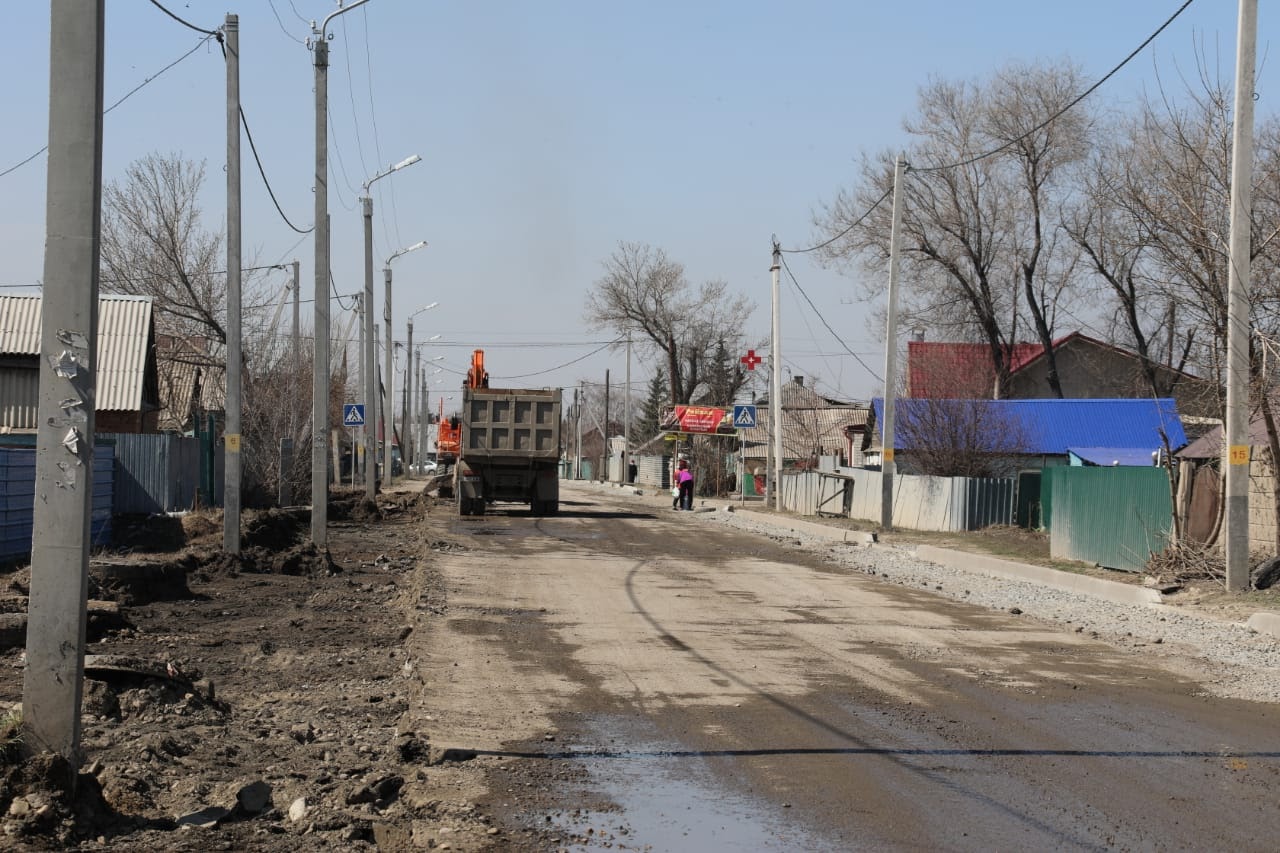
According to the results of 2019, the coverage of the population of villages with centralized water supply amounted to 78%.
For 2020, 23.9 billion tenge were allocated for the implementation of 130 projects with a total value of 59.9 billion tenge, including 16.2 billion tenge were allocated for 111 projects in villages:
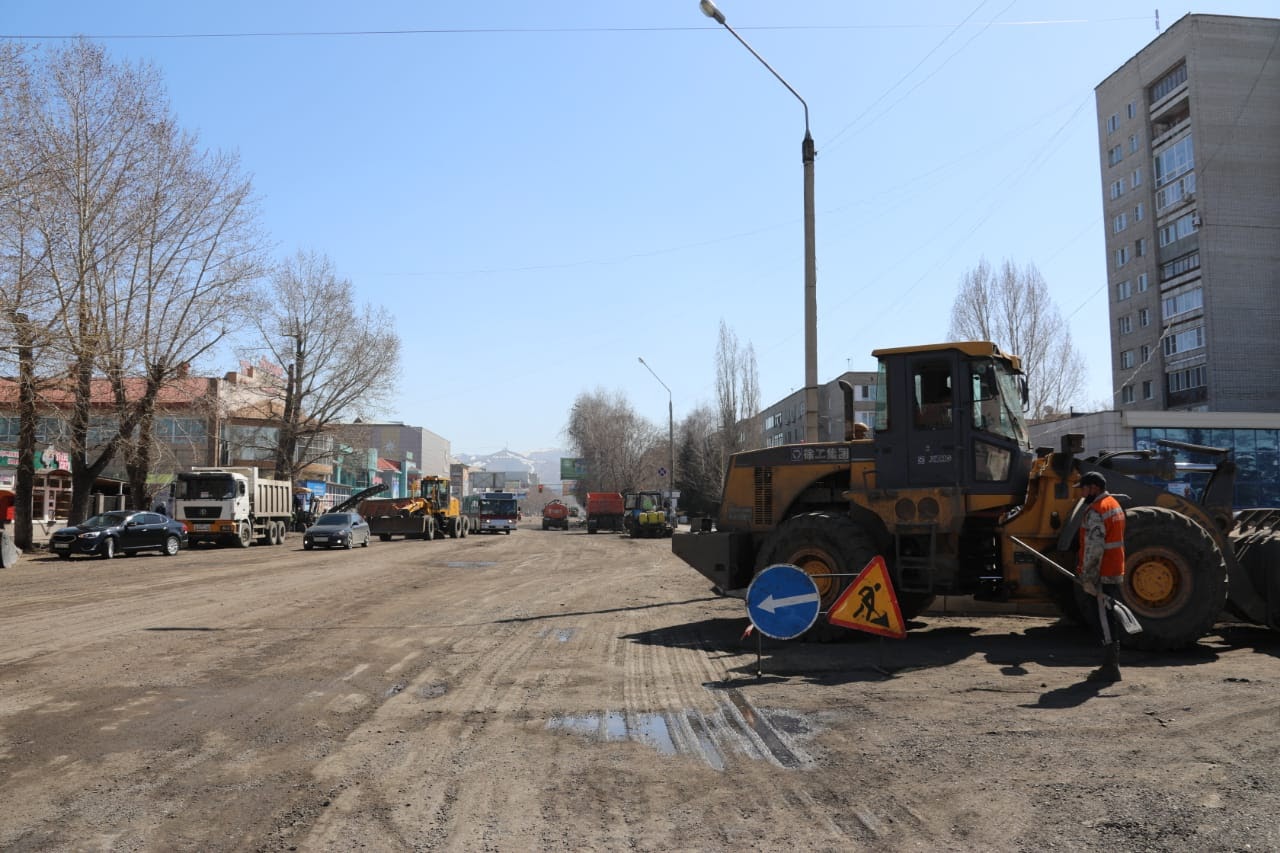
In 2020, 92 projects are planned to be commissioned out of 111 projects, with a population of 20,000 people, including:
As of May 1, 2020, 26 design and estimate documentations were developed in rural settlements for the total construction amount of 18.4 billion tenge; 48 design and estimate documentation for the total construction cost of 26.3 billion tenge is at different stages of development.
The following indicators are expected in 2020 compared to 2019:
Access of the population to water supply in the region:
Stay updated about the events of the Prime Minister and the Government of Kazakhstan - subscribe to the official Telegram channel
Subscribe